
































Boy Summer arrived with absolutely no warning! It certainly appears that we are in for another very long, hot summer. As usual this time of the year, I’m going to remind everyone to be careful when working outdoors in the Florida heat. Living here we are all familiar with the high temperatures in the summer. Not only the heat but the humidity can be stifling. The trickery those rain showers play is really disturbing as well. You think, oh look at the rain cooling things off. Nope. It’s just raising the humidity levels! At any rate, if you are working outside in the Florida summer, here are a few tips to deal with the heat.
• Wear loose-fitting, lightweight clothing
• Protect against sunburn
• Drink plenty of fluids
• Take extra precautions with certain medications
• Use the buddy system
• Take it easy during the hottest parts of the day
• Get acclimated
It’s often difficult in the agriculture business to take it easy in the hottest part of the day so acclimation is the best route to take. But even if you think you can handle it, there are still things you need to be aware of. Look for signs of heat exhaustion and heat stroke.
Once your body stops being able to regulate your core temperature, heat exhaustion and heat stroke can occur. Some of the symptoms to watch for include:
• Dizziness
• Fatigue
• Headache
• Excessive sweating
• Nausea and vomiting
In its more severe form, heatstroke, confusion, irrational thoughts, or seizures may occur. If you experience these symptoms, please seek medical attention as soon as possible. This is when the buddy system is most helpful!
Stay safe out there!
 Sarah Holt
Sarah Holt
Publisher/Photography
Karen Berry
Senior Managing Editor/ Associate Publisher
Sarah Holt Sales
Karen Berry
Sarah Holt
De De Floyd
Melissa Nichols
Creative Director/Illustrator
Juan Alvarez
Photography
Karen Berry
Raelyn Hudson (cover)
Staff Writers Al Berry
Sandy Kaster
James Frankowiak
Sean Green
Contributing Writers
Wade Osborne
John Dicks
Tiffany Dale
Social Media
Victoria Saunders
In The Field Magazine is published monthly and is available through local Hillsborough County businesses, restaurants, and many local venues. It is also distributed by U.S. mail to a target market, which includes all of the Greenbelt Property owners, members of the Hillsborough County Farm Bureau and Strawberry Grower’s Association.
Letters, comments and questions can be sent to P.O. Box 5377, Plant City, Florida 33563-0042 or you are welcome to email them to: info@inthefieldmagazine.com or call 813-759-6909
Advertisers warrant & represent the descriptions of their products advertised are true in all respects. In The Field Magazine assumes no responsibility for claims made by advertisers. All views expressed in all articles are those of the authors and not necessarily those of Berry Publications, Inc. Any use or duplication of material used in In the Field magazine is prohibited without written consent from Berry Publications, Inc.


Greetings,
No month is ever the same for Hillsborough County Farm Bureau. This month we had a mix of activities that allowed us to reach multiple audiences including Hillsborough County third-graders, ESE students in the county, and staff of one of our Congressional representatives.
The Florida State Fairgrounds was the location for both the four-day Spring Ag-Venture session and our Ag-Abilities program. Those two initiatives allowed us to reach nearly 900 students thanks to the efforts of our co-sponsors partners and many Farm Bureau volunteers.
We also hosted a tour for the staff of U.S. Congressman Vern Buchanan last month. Keeping our lawmakers at all levels aware of the challenges our industry faces is of vital importance on a continuing basis. There is more information on those three activities included in this edition of In The Field Magazine, and I encourage you to take a look at it.
“Field to the Hill” took place this month. This is an opportunity for our members to visit our lawmakers in Washington, D.C. to express our thanks for their efforts on behalf of our farmers and ranchers and to continue to educate them on the challenges our industry faces we strive to feed those who reside not only our country but globally, as well.

HILLSBOROUGH COUNTY
As you can see, the activities that comprise our mission are ever-changing and occur, locally, statewide and nationally. These educational programs as well as our advocacy efforts is what continues to make Farm Bureau the “Voice of Agriculture.”
If you are not a Farm Bureau member, please consider joining so that you can help us advocate and educate on behalf of agriculture with our varied audiences. If you are a member, please volunteer at whatever level is practical for you. Please visit www. hcfarmbureau.org for more information about our organization, member benefits, and opportunities for engagement.
Thank you for your continued support of our industry.
Dennis Carlton, Jr. Dennis Carlton Jr. Dennis Carlton Jr. - President
Dennis Carlton Jr, Casey Runkles, Madison A. Salter, Clay Joyner, Carl Bauman, Brittany Coleman, Travis Council, Jake Cremer, Tiffany Dale, Drew Futch, Brian Shoop and Michelle Williamson
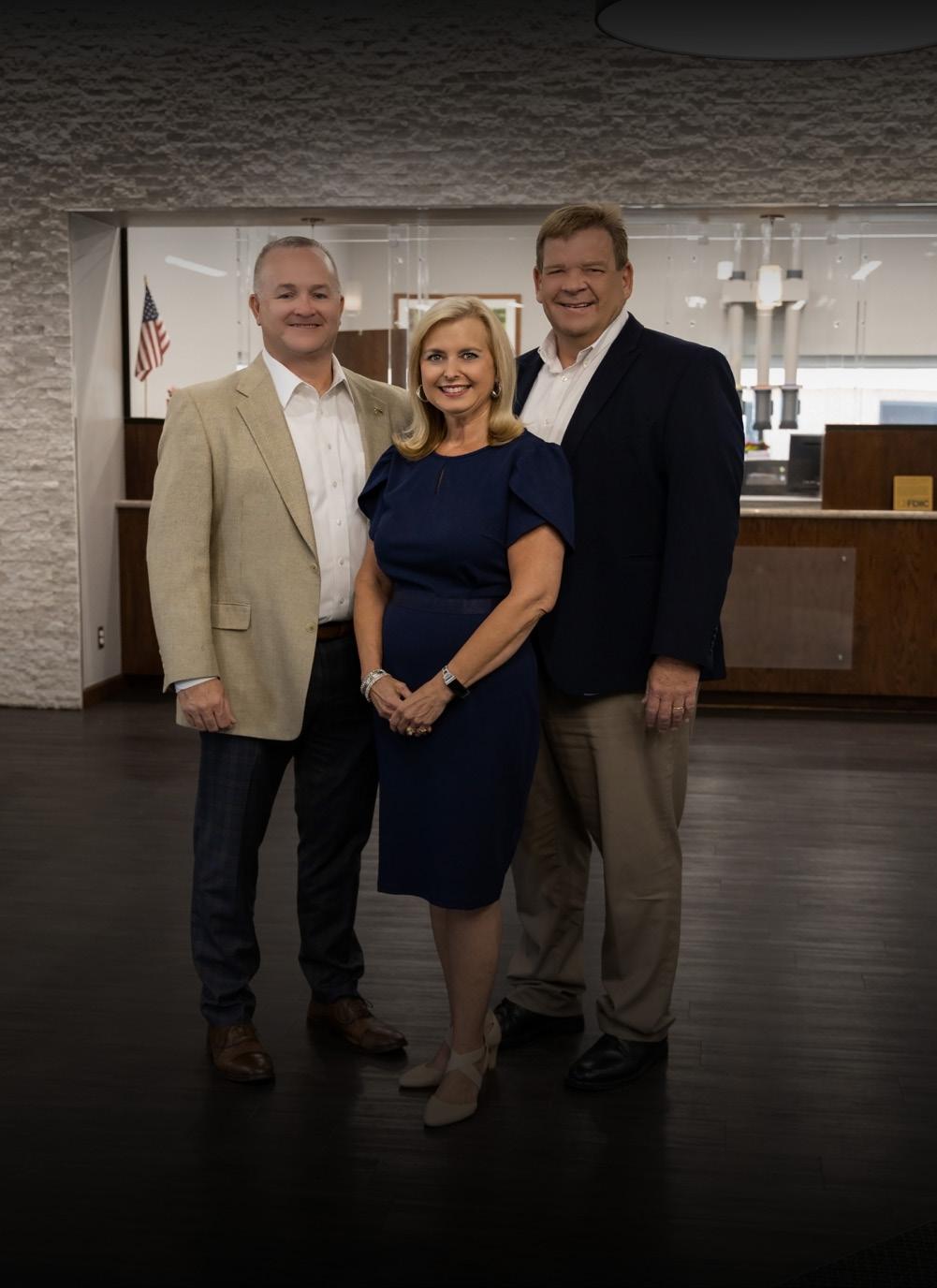

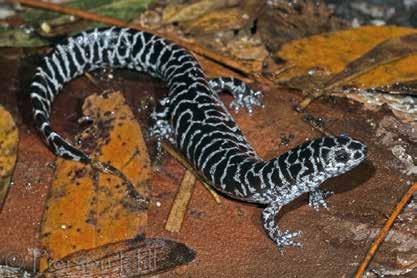
The Frosted Flatwoods Salamander, or the Ambystoma Cingulatum as it’s known by its scientific name, is an endangered salamander species native to the Apalachicola River in Franklin, Wakulla, Liberty, Jefferson and Baker counties. The Frosted Flatwoods Salamander inhabits slash and longleaf pine Flatwoods that have a wiregrass floor and scattered wetlands.
It is a small (9–13.5 cm total length), elongated species of mole salamander. It has a small, indistinct head, short legs, and a long, rounded tail. Typical coloration consists of a background of brownish to purplish-black overlaid with narrow gray or silvery-white reticulation bands, or diffuse spotting. The gilled aquatic larvae are distinctly colored, having a series of bold brown and yellow longitudinal stripes.
The diet of the Frosted Flatwoods Salamander primarily consists of earthworms and spiders. The Frosted Flatwoods Salamanders migrate to ponds or small puddles to breed from October to January during wet weather. Females lay clumps of eggs among vegetation such as twigs and pine needles. The maximum clutch size for the Flatwoods Salamander is 35 eggs, which hatch 48 hours after being laid. Larvae metamorphose in 90 days.
The salamander is listed as threatened under the Endangered Species Act. One wicked hurricane could wipe the Frosted Flatwoods Salamander from the map. Due to some persistent acquisition and conservation work at the St. Marks National Wildlife Refuge near Tallahassee, the Frosted Flatwoods Salamander might just avoid the more perilous designation.
The Frosted Flatwoods Salamander once filled ponds across the longleaf pine forests of the Southeastern coastal plain. What was once 90 million acres of longleaf, though, has been reduced to about four million acres over the last three centuries. Woodcutters, farmers, and developers laid waste to the longleaf territory. In 2006, 52 ponds on St. Marks were occupied by salamander larvae. A decade later, only 11 ponds showed signs of the salamanders. Last year? Six ponds.
The changing climate doesn’t help. It’s often too hot, too wet, or too dry for the salamanders’ liking. Female salamanders

lay their eggs in the dry depressions alongside the ponds and wait for rainfall to fill the hollows so the eggs can hatch. But if the rains don’t come or come too late or too frequently, the larvae won’t survive. Climate-fueled hurricanes also push saltwater further into St. Marks’ forests and kill the grasses and forbs salamanders need to survive.
The U.S. Fish and Wildlife Service has restored some ponds in the north end, planted longleaf and laid down some beneficial fire on thousands of acres. Biologists and interns have also collected larvae and relocated them to cattle tanks where they metamorphose into baby salamanders before being returned to their ponds.
Last year, they collected 245 larvae and reintroduced more than 200 of them to different ponds to bolster genetic diversity. Twenty of the larvae were shipped to the Amphibian Foundation in Atlanta where, last year, a Frosted Flatwoods Salamander was bred in captivity for the first time. “There’s documentation that shows that head-starting increases salamander chances for survival in the wild,” said Amanda Bessler, wildlife biologist for St. Marks, St. Vincent, Lower Suwannee, and Cedar Keys refuges. “It seems we’re slowly moving, at least, in a positive direction, but much needs to yet be learned. I’m cautiously optimistic. I really hope they do better. There’s a lot of people who care about salamanders and fingers crossed, let’s hope we don’t get any more, big storms.”


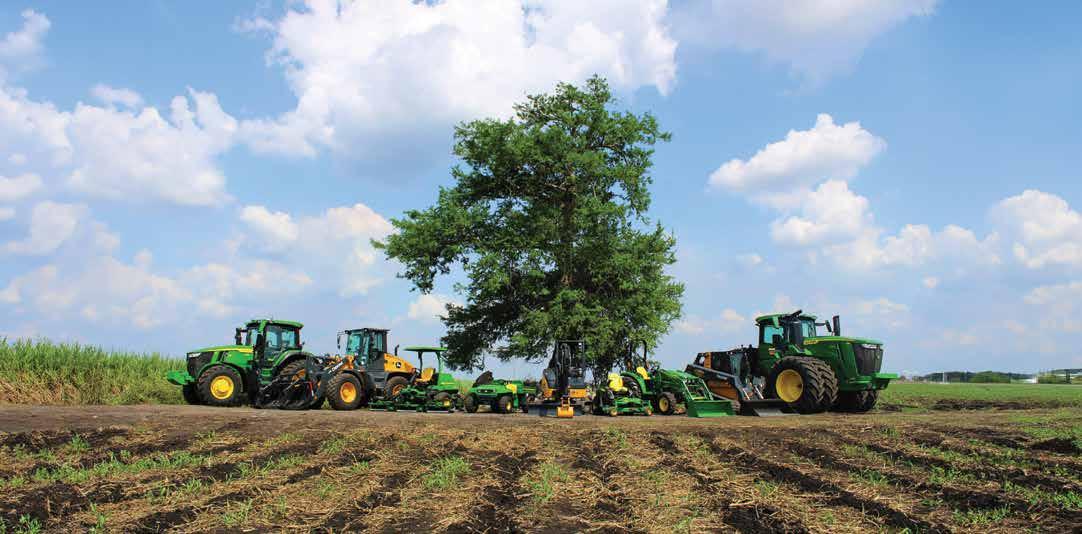



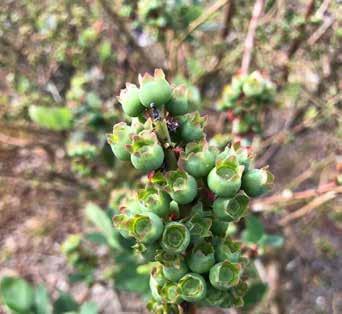
Neeraj Kumar did not start his career in agriculture. He started it in the world of technology. “In my professional capacity, I am honored to serve as the leader of the Data Analytics and Intelligence team within a renowned global financial institution, focusing specifically on combating financial crime,” Kumar said. “Witnessing the diligent work of my grandfather and father as they nurtured our family farm since my earliest memories has instilled within me a profound appreciation for agriculture.”
This deep-rooted passion has driven Kumar to pursue his farming endeavors in the fertile lands of Lithia. “It's a fulfilling journey where I merge my expertise in finance with my love for cultivating the land, creating a meaningful balance between my professional and personal pursuits.” Kumar is the owner of Lithia Berry Farms which is a you-pick blueberry farm.
Lithia Berry Farms is a meticulously maintained 19-acre blueberry farm tucked away at the dead end of a quaint, well-kept road. The farm consists of 16.55 net-acres producing a variety of blueberries that include Jewels, Emeralds and Magnus. “For the past three years, I've proudly overseen the operations of my farm, nurturing its growth and development,” Kumar said. “Within this time, I've cultivated four distinct varieties of

blueberries, Emerald, Jewels, Magnus, and our latest addition, Sentinel. Each variety brings its own unique flavor and character to the farm, enriching the agricultural tapestry we've carefully crafted. This is family managed local farm bringing fresh berries from the farm to the table. We strive to learn from our customers and grow together.”
Blueberries have been long prized as great tasting and value-added fruit. They are low in calories, virtually fat-free, a good source of fiber, and very high in antioxidants. Research has put blueberries at the top of a list of 40 fruits, juices, and vegetables in antioxidant activity. Antioxidants neutralize the free radicals that contribute to heart disease and aging. Blueberries may contain over 40 cancer-preventive compounds, as well as vitamins C, E and beta carotene. “We have approximately 40,000 plants of these varieties,” Kumar said. “Our blueberry season usually starts in March and continues through June.”
Emerald Blueberries are medium to large with a slightly oblong shape and a deep blue color. They have a sweet, mild flavor with a hint of tartness and a firm texture. They can be used for fresh eating, baking, and making jams and preserves. Jewel Blueberries are large, firm, and round with a sweet

taste that has a slight hint of tanginess. These are good for eating fresh, baking, and freezing.
Magnus Blueberries are medium to large with a dark blue color and a slightly tart taste. They have a firm texture that makes them ideal for fresh eating, baking, and other culinary applications.
Sentinel Blueberries are medium to large, deep blue-purple berries with a sweet-tart flavor and firm, juicy texture. Upright growth makes them ideal for smaller spaces. They ripen mid to late summer, have a high yield, and are hardy. Perfect for fresh eating or culinary use. “In our commitment to sustainability and innovation, I've forged valuable partnerships with government agencies to implement automation and watersaving initiatives,” Kumar said. “These collaborations not only enhance our operational efficiency but also underscore our dedication to responsible farming practices. Together, we're shaping a future where agriculture thrives harmoniously with

nature, preserving our precious resources for generations to come.”
If you ask Kumar what makes Lithia Berry Farms different from other you-pick blueberry farms in the area, he’ll tell you it’s his family. “What sets our farm apart is our close-knit family management and dedication to delivering the freshest produce Florida has to offer,” Kumar said. “With meticulous care and attention to detail, we maintain a pristine and orderly environment where every berry is nurtured to perfection. The result? Mouthwatering, flavorful berries that reflect the essence of our sunny Florida soil and the passion we pour into our craft. From our family to yours, we take pride in offering you a taste of true farm-fresh goodness.”
If you would like to learn more about Lithia Berry Farms, you can visit their website at www.lithiaberryfarms.com. Lithia Berry Farms is located at 17928 Bill Taylor Rd. in Lithia.
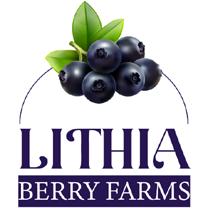







Tracy Crist and her family have strong ties to the Plant City community and to agriculture. “My husband’s family were longtime residents and farmers of Plant City and his greatgrandfather was one of the founding members of the Hopewell area,” Crist said. “My background has always been in animals, but secular work was with primates. Privately we had horses, which my husband trained for years, in addition to beef cattle and chickens along with a large orange grove all on the same 58 acre-property which we helped manage while his grandmother was still alive. We took the property over in 1998.”
Crist and her family are the owners of Hopewell Heritage Farm in Plant City. Their farm came into existence when Crist’s mother-in-law decided to sell the majority of the property. “So, we went from 58 to 5.7 acres,” Crist said. “That is a huge adjustment when running an agricultural business. My husband started his lawn business after leaving the horse training trade, I looked into animal options that I could run on a small holding farm. Not interested in goats or sheep, so we looked into these pigs.”
The couple visited farms, did a lot of research and joined registries and asked a lot of questions before starting with two pigs. “The plan was always in the selling of pork and registry quality breeding stock,” Crist said. “We started with two youngsters in 2020 and now have more than 50 pigs and regularly harvest for customers. My breeding stock that I sell are registered with AKKPS and must fulfill the registry standards along with my criteria. Pigs that don’t meet those standards stay here and become part of my meat herd. I have brought stock from other reputable farms from across the country to continue to improve my drove. Kunekune are a breed in progress, so having a genetic pool that works with my goals is super important. We look for size, muscle and growth.”
If you ask Crist what makes Hopewell Heritage Farm different from other farms, she will tell you it’s her pigs and her family. “We are different because of the type of pig we raise and that the farm is run by myself only with the help of my teenage daughter when she is available,” Crist said. “The type of pig we have are a grazing pig from New Zealand called
Kunekune and it is touted for incredibly juicy, red-marbled meat and extremely sweet personality. Being a grazing pig and the mild nature of the Kunekune lends itself well to raising them on small or large homesteads and farms. It is a lardtype pig which makes it perfect for true Nose to Tail use and that is what we encourage our customers to do.”
Growth of Kunekunes is slow compared to traditional commodity pigs, so harvest time is usually between 10-15 months with a target weight of 200 lbs. “These pigs are also smaller than what people are used to seeing, with sows reaching 300 lbs and boars reaching 350 around three to four years, though the sizes are extremely varied,” Crist said. “All these traits work well with family farms where children often help with chores. When I sell breeders, I take my time vetting the buyers to ensure they are raising the pigs for the right reasons as many are indiscriminately breeding simply to sell piglets, similar to a puppy mill. Once I’ve sold a piglet that buyer has complete support from me in that I will continue to mentor them and most become my friends. It is my goal for any animal leaving my farm to be happy, healthy and successful wherever they go. That means my buyers will be happy and successful as well.”
Crist and her family have gotten some great feedback from their clients. “All my clients that purchase meat have been extremely happy with the flavor,” Crist said. “Most are looking for


quality, humanely raised pork options and are thrilled when they tour the farm when they pick up their meat. All of my customers tour the farm so they can see for themselves who we are, why we are different, experience the sweet nature of the pigs and often get to pet the babies. Those that buy animals for themselves instantly fall in love with their pigs and can’t imagine not having them around because of their ease of care, not destroying the properties, minimal rooting and minimal feed requirements.”
“Keeping things local keeps our farm running and other small farms as well,” Crist said. “It is huge to have a repeat buyer, who sees the benefits of staying small and supporting small. We also do our best to shop other local farms, and buy from the closest feed mill rather than buy feed from the box stores. Minimizing our footprint is an important part of our world today and we all need to do that.”
If you’d like to learn more about Hopewell Heritage Farm, visit their Facebook page at www.facebook.com/HopewellHeritageFarm or email Crist at HopewellHeritageFarm@gmail. com.

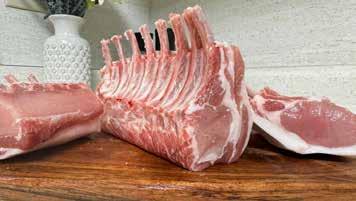







Tampa Bay used to be loaded with jack crevalle, but for the past decade, their numbers had dwindled to the point that I might catch one every couple of weeks. Well, by what I’ve been seeing lately, the jack is back!
For the past six months, I’ve encountered three different school sizes of jack crevalle on a regular basis. One with fish ranging 8-10 inches, another school measuring roughly 16-18 inches, and the largest school of all, a whopping 28-30 inches. The two smaller school sizes go mostly unnoticed unless you happen to be chumming for other species with live bait. Not so with the larger school of jacks. You can see them devouring bait fish as they cruise across the grass flats a hundred yards away.
sound of the drag screaming as line rips off the spool is second to none. For tackle, I’m still using my 27-year-old, eight-foot medium mod-fast, G-Loomis, Surf Series rod. I have it paired with a Penn Spinfisher 6500 reel loaded with 200 yards of 50-pound braided line and the appropriate amount of backing. For terminal tackle, I use six feet of 60-pound fluorocarbon leader, with a 6/0 hook.
Since I’m mentioning hard-fighting fish, I’ve got to throw cobia in the mix.
Many times, when anchored and tarpon fishing, cobia will approach your boat, especially if you’re chumming while fishing. The same can be said if you’re anchored and cut bait chumming for mangrove snapper or other species. Cobia have a knack for showing up unexpectedly. The key to successfully catching one is being ready with the right tackle.
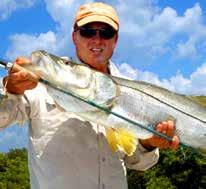
Should you be fishing and witness a school of these mammoth jacks heading your way, start broadcasting more live bait chum. As soon as they see the freebies, some will erupt on the bait, giving you time to cast towards them. Prior to making a cast, grab a rod slightly stiffer than you normally use on the flats if available because, pound for pound, large jacks are some of the hardest fighting fish in Tampa Bay.
Want to pick a bigger fight?
Tarpon are literally everywhere throughout Tampa Bay. They’re around every bridge from the Skyway to the Courtney Campbell, at every port, and in every main deep-water channel. There are many methods for catching tarpon, but my favorite is sight-casting live pass crabs or live bait to schools of daisy-chaining fish. The thrill of the thump as it picks up your bait and the
Tarpon tackle works fine for cobia, it’s a little overkill, but at least you shouldn’t lose any fish. For the unexpected encounter, I always keep a fake eel rigged on one of my rods. If I’m chumming and a cobia comes up in my slick, I will have someone cast a fake eel past it at an angle and work it back in front of it. While they’re doing that, I’ll hook up a live bait and have someone toss the live bait out in front of it, if it doesn’t take the eel.
Once you get a hookup, slow down and enjoy the ride. Cobia make long runs and do a lot of zig-zagging in an attempt to escape. It takes quite a while to wear cobia down before bringing them into the boat, so be patient.
Cobia’s minimum size for harvest is 33 inches to the fork, so be absolutely sure
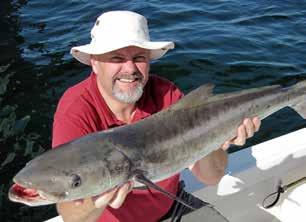
it’s big enough before you stick it with a gaff. Once it’s brought on board, I always put it straight in my fish box and close the lid. If you don’t have that capacity on your boat, place it on the deck and step back. Large cobia can do significant damage while thrashing around until it expires.
There are many hot spots to target cobia around Tampa Bay. Start by checking out the channel marker buoys, range markers, or bridge pilings. Any of the bay’s deep water grass flats are ideal also. If you’re on the flats, pay particular attention if you see any manatees or large stingrays. Cobia love company. You will often see them swimming in pairs or groups. I’ve seen as many as 10 in one group before. It’s a sight to be seen!
Should you get lucky enough to boat two cobia, you’re done! There is a strict two-fish per-vessel limit on the Gulf Coast.

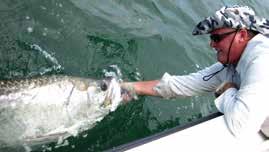

Tampa Bay fishing guide Wade Osborne of “Afishionado Guide Services” has been plying the waters of Tampa Bay as a professional full-time captain, since 1997. Osborne has been featured on numerous TV and radio shows and writes for multiple publications. Osborne offers inshore fishing charters on light tackle spin, fly or plug. He also offers eco-tours with an emphasis on photography. For more info visit Afishionado.com or find Afishionado Guide Services on Facebook and Instagram. Email: wade@afishionado.com Call/Text 813-286-3474



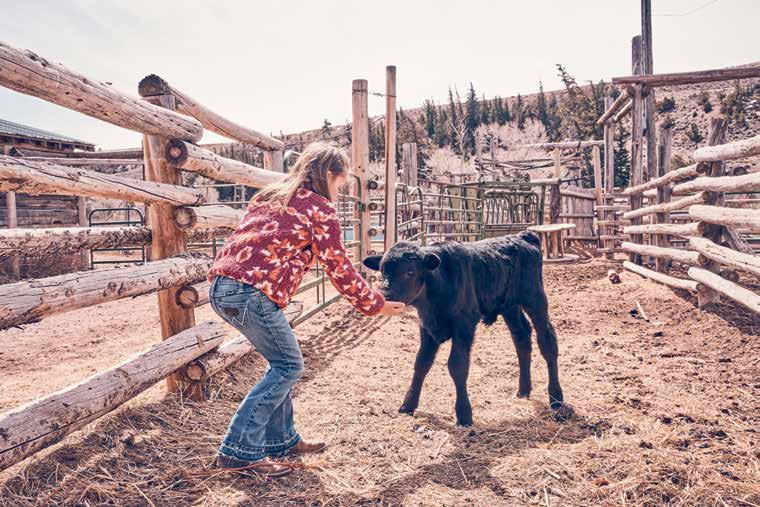


*In-store only. 10% off regular priced items, cannot be combined with additional discounts.


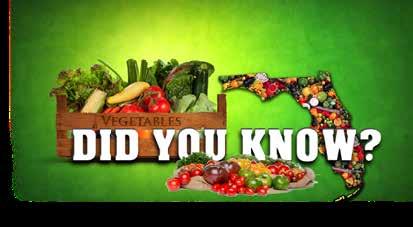
production. California, Florida and Oregon led the nation in sales, according to the 2014 USDA Census of Agriculture, Horticultural Specialties report.
• Florida ranks second in the United States regarding fresh vegetable production. It provides 80% of the fresh vegetables consumed in the whole of the United States during the months of January, February and March every year.
• More than half of the United States’ supply of cane sugar is produced in Florida.
• Florida is the No. 1 producer of at least eight major U.S. crops.
• Florida’s famed agriculture industry employs 2 million people and contributes more than $104 billion to the state’s economy each year.

FAMILY OWNED AND OPERATED SINCE 1971

All of us do dumb things from time to time for no reason at all. I have often wondered what makes a person do things out of the ordinary. Even smart people do dumb things. We super-size our French fries and order a diet coke. Many famous people have done stupid things. Einstein could not remember his own address. Edgar Allen Poe split his pants playing leap- frog with his wife.
In 1992, Frank Perkins of Los Angeles made an attempt on the world flagpole-sitting record. Suffering from the flu he came down eight hours short of the 400-day record, his sponsor had gone bust, his girlfriend had left him and his phone and electricity had been cut off.
A woman came home to find her husband in the kitchen, shaking frantically with what looked like a wire running from his waist towards the electric kettle. Intending to jolt him away from the deadly current she whacked him with a handy plank of wood by the back door, breaking his arm in two
Editor’s Note: This Rocking Chair Chatter was originally printed in the May 2018 issue
places. Till that moment he had been happily listening to his Walkman.
Iraqi terrorist, Khay Rahnajet, didn’t pay enough postage on a letter bomb. It came back with “return to sender” stamped on it. Forgetting it was the bomb he opened it and was blown to bits. John Bloor mistook a tube of superglue for his hemorrhoid cream and glued his buttocks together. Paul Monkton used a van with his name and phone number painted on the side as a getaway vehicle.
A bus carrying five passengers was hit by a car in St. Louis, but by the time police arrived on the scene, 14 pedestrians had boarded the bus and had begun to complain of whiplash injuries and back pain.
A man in Johannesburg, South Africa, shot his 49-year-old friend in the face, seriously wounding him, while the two practiced shooting beer cans off each other’s head. AT&T fired President John
Walter after nine months, saying he lacked “intellectual leadership.” He received a $26 million severance package. Perhaps it’s not Walter who’s lacking intelligence.
A man spoke frantically into the phone: “My wife is pregnant and her contractions are only two minutes apart!”
“Is this her first child?” the doctor asked. “No, you idiot!” the man shouted. “This is her husband!”
In Ohio, an unidentified man in his late twenties walked into a police station with a 9-inch wire protruding from his forehead, and calmly asked officers to give him an X-ray to help him find his brain, which he claimed had been stolen. Police were shocked to learn that the man had drilled a deep hole in his skull with a Black & Decker power drill, and stuck the wire in to try and find the missing brain.
A 25-year-old Argentine man pushed his 20-yearold wife out of an eighth-floor window after an argument, but her fall was broken when her legs became entangled in power lines below. A police spokesperson told the state-run news agency that when the husband saw the woman dangling beneath him, he apparently tried to throw himself on top of her to finish her off. He missed, however, and fell to his death. Meanwhile, the woman managed to swing over to a nearby balcony and was saved.
Maybe I’m dumb, but there are some things I don’t understand. Why don’t we ever hear jokes about father-in-laws? When statistics claim that the sum of all the stars in the sky is about four billion, people believe it. But, when someone sees a sign on a park bench or board stating, “wet paint,” they must verify this? How many times will we keep coming back and opening the door to the fridge when we are hungry? Do we really think that food will appear there miraculously? Why did the Japanese pilots who were planning to crash into American ships wear helmets? Why do people move a vacuum cleaner over a small piece of thread again and again? Why do we pick it up, examine it and then place it back down and move the vacuum cleaner over it to give it a second chance? Why are soap bubbles always white no matter the color of the soap? Have you noticed that if it is summer we try and make the house as cold as it would be during winter, and if it is winter, we try and make the house as hot as it would be during summer?

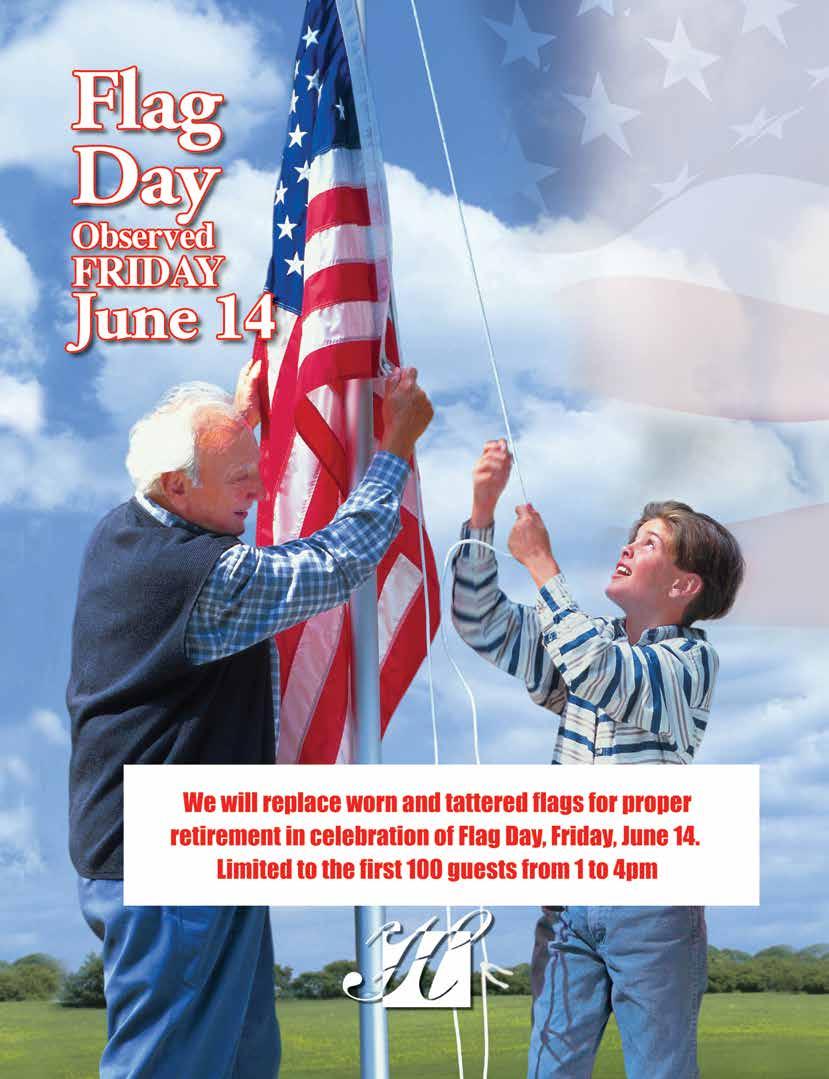

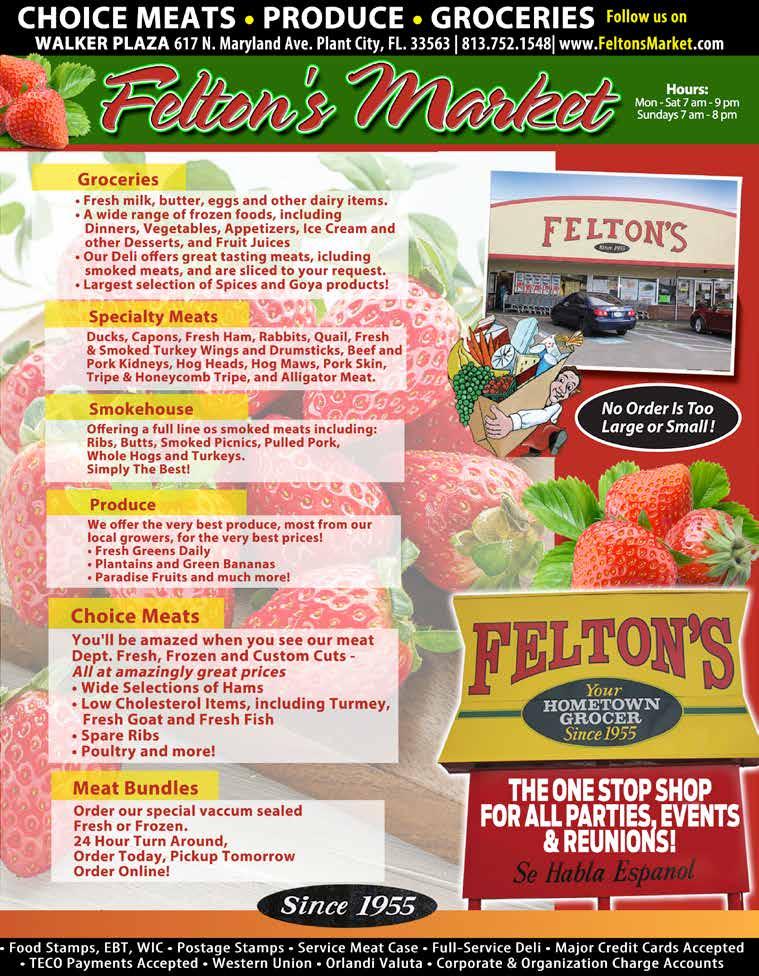

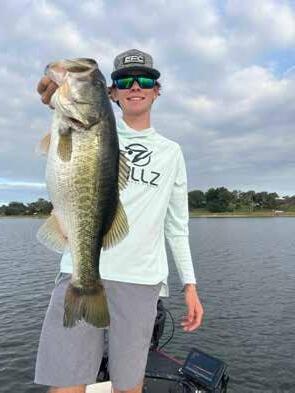
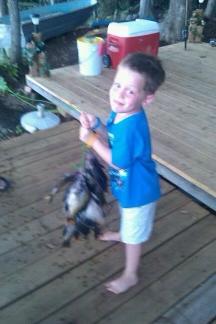
Standout baseball, football and soccer stars aren’t the only high school athletes earning college scholarships.
Just ask Durant senior Nick Hawkins, a rising angler who has made waves in the world of competitive bass fishing. Except in his case, it’s not goals or touchdowns that made Hawkins a standout star but his ability to hook hefty fish.
Hawkins has secured a scholarship to Webber International University, thanks to his exceptional skills on the water.
“I’ve liked fishing since as long as I can remember but after winning second place in my first tournament at age 12 I knew I could see myself doing this the rest of my life,” he said.
His journey began as a toddler, when his parents introduced him to the art of fishing on their property’s 80-acre lake. “It was a family pastime and fun tradition,” said his mom Jessica. He quickly became a fish whisperer. “We can both fish off the front of the boat with the exact same everything and he’ll catch a fish, unhooks it and then catches another one and I’m still waiting for a bite,” said mom. “We have a photo of him when he was three or four and he’s holding an entire stringer of 20 or 30 bluegill.”
When he got older, a friend reached out and invited him to be his partner in a bass fishing tournament. He eagerly accepted and was officially “hooked.”
He quit baseball, a sport he had been playing since he was young, to focus his time and energy on perfecting his fishing technique. “He feels like God gave him a gift, he feels like this is his gift that God gave him and he was meant to do this,” said Jessica.
Hawkins quickly rose through the ranks of junior angling competitions, earning recognition for his prowess on the water. Competing in his first state championship, when he was in eighth grade, he saw a senior earn a full-ride scholarship to a Georgia school. “That was the first time I realized I could do this for a living,” he said.

He’s competed in more than 130 tournaments, most recently in those sponsored by Florida B.A.S.S. Nation. Generally, most tournaments include a set limit of five fish but once an angler has five fish, they release their smallest bass with each bigger fish caught. The fish are weighed and the standings are based on weight caught during the event. The largest bass he’s caught to date weighed in at eight pounds four ounces. He and his partner, longtime friend Hagen Keen, have qualified for and will compete in this year’s state championship in June, where he will earn his fourth championship ring and hopefully earn a spot in the national championship later this summer.
Hawkins’ dedication paid off when, at last year’s High School Bassmaster Combine in Decatur, Alabama, scouts from several colleges took notice of his impressive track record. He considered all their offers, ultimately deciding to sign with Webber, located on Crooked Lake near Lake Wales. “I talked to my family and said I didn’t want to leave home,” he said. “I love Florida fishing better and I also don’t like cold weather.” Hawkins’ signing ceremony will be held at Durant on Thursday, April 25 and will be the first step toward a career he’ll spend on the water doing the thing he loves the most.
“When I’m on the water my mind is clear and there are no problems with the world at all,” he said. “Fishing is my escape.” He hopes that escape will one day turn into a profitable career.
At the professional level, there are multiple different circuits for anglers, including Major League Fishing Bass Pro Tour, Bassmaster Elite Series, Tackle Warehouse Pro Circuit and the National Professional Fishing League.
According to Zip Recruiter, as of April 15, 2024, the average annual pay for a professional bass fisherman in the United States is $51,755, which works out to approximately $24.88 an hour. The most elite anglers pull in six figures.
“I’d rather try to chase my dream than work at a job I don’t love,” he said.



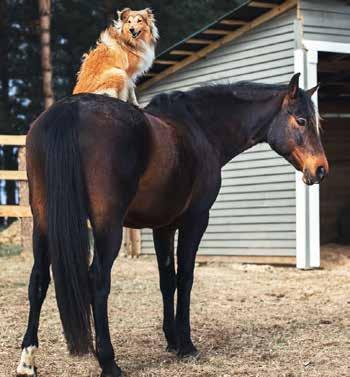
Farm Bureau is seeking nominations for the 2025 Farm Bureau Dog of the Year” contest, now in its 7th year. Supported by Nestle’s Purina Pet Care, the competition celebrates farm dogs and the many ways they support farmers and ranchers. The grand prize winner will receive a year’s worth of Purina Pro Plan dog food and $5,000 in prize money. For eligibility guidelines and submission requirements, visit fb.org. The entry deadline is July 12.
The United Kingdom-based Quacquarelli Symonds (QS) education and marketing networking company has ranked the University of Florida 21st among agriculture colleges worldwide in 2024. QS ranked UF 23rd last year. This ranking is based on a methodology that measures multiple indicators from universities across the globe covering 55 different disciplines.
The Hillsborough County Farm Bureau Women’s Committee has announced this year’s winners of the Youth Speech Contest. They are Ashlyn Demanovich – 1st Place. She is a member of the Newsome FFA and will now proceed to the District competition. Second Place went to Marlena Lott of the Durant FFA, and 3rd Place to Sarah Menendez of the Brandon High School FFA. The contest topic was “How does Florida Farm Bureau Federation help connect youth with the Agriculture industry?”
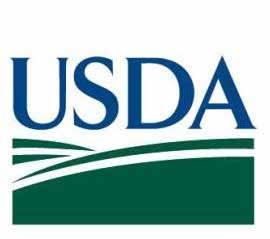
The U.S. Department of Agriculture (USDA) has announced the availability of $1.5 billion to invest in partner-driven conservation and climate solutions through the Regional Conservation Partnershp Program (RCCP). Proposals will be accepted through July that will help farmers, ranchers and forest landowners adopt and expand conservation strategies to enhance natural resources while addressing the climate crisis. Project proposals for RCCP are being accepted through the RCCP portal with details on the funding opportunities available on Grants.gov.
The American Farm Bureau Federation (AFBF), in partnership with Farm Credit, is seeking entrepreneurs to apply online by June 15 for the 2025 Farm Bureau Ag Innovation Challenge. This national business competition, now in its 11th year, showcases U.S. startup companies developing innovative solutions to challenges faced by America’s farmers, ranchers and rural communities.
The overall winner of the competition will receive $100,000 in startup funds, the runner-up will be awarded $25,000 and two additional business owners who advance to the final four round will each receive $10,000.
Examples of successful Ag Innovation Challenge submissions, as well as detailed eligibility guidelines and the competition timeline, can be found at: fb.org/challenge.



•Most of the dairy cows are Holsteins, which have the black and white spots.
•Each dairy cow produces about 6-8 gallons of milk each day and is milked 2-3 times per day.





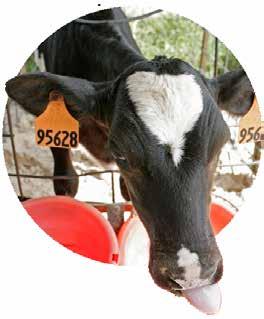
•It takes about 5-7 minutes for a cow to be milked.

•Cows have 32 teeth total, but they do not have top front teeth.
•Cows can smell up to 6 miles away.
• Dairy cows are creatures of habit and dairy farmers do their best to make sure these routines are kept daily.

They know around what time during the day they should be milked and what time of the day they should be eating, and they will let you know when they are hungry!
Because of this, cows will stand in line, waiting for their turn in the parlor to be milked.


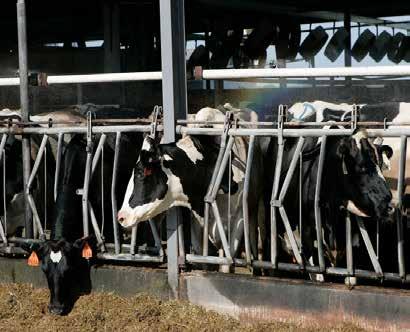
 Division of Food Safety
Division of Food Safety
This year’s Harvest Awards, presented by the Hillsborough County Fair, won’t be awarded until October, but applications for nominees are now open. According to event chair Randy Sears, the 2024 event will have some exciting new additions. “After careful consideration, the Harvest Awards Committee has moved the event up to October 10, three weeks before the start of the fair that runs from October 31 until November 11, 2024, at the fairgrounds, 215 Sydney Washer Road, Dover. In addition, we’ve added a new category to recognize emerging young leaders in agriculture with the Next Generation Farmer, Rancher, Nurseryman Award for an individual with less than 10 years in the field.”
The mission of the Harvest Awards, since its inception, has been to recognize the accomplishments of families, individuals and organizations for their achievement and commitment to agriculture and to preserve the agricultural heritage of Hillsborough County. Award categories include Farm Family of the Year; Lifetime Achievement; Outstanding Agribusiness; Outstanding Public & Community Service; Urban Agriculture/ Agriculturist; Outstanding Farmer, Rancher, Nurseryman; Outstanding Woman in Agriculture; Posthumous Memorial Award and the new Next Generation Award.
Applications are available on the Fair’s website: hillsboroughcountyfair.com, where the complete list of previous winners is also listed, as well as application requirements. All nominations must be received by July 15 and can be submitted by mailing to: Harvest Awards, Hillsborough County Fair, Post Office Box 100, Sydney, Florida 33587, or via email to: suzanne@ hillsboroughcountyfair.com.
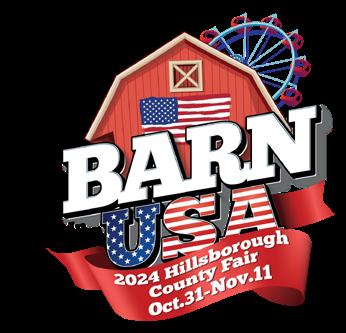
Participants in the luncheon include agricultural, business, and community leaders; educational and governmental representatives; and students representing 4-H, FFA, and other youth groups. In addition to a lunch featuring strawberry shortcakes provided by the Florida Strawberry Growers Association, participants will receive gift bags filled with items from numerous commodity organizations and businesses. Businesses wishing to donate may contact Betty Jo Tompkins, bjt6890@yahoo.com or (813) 477.8332.
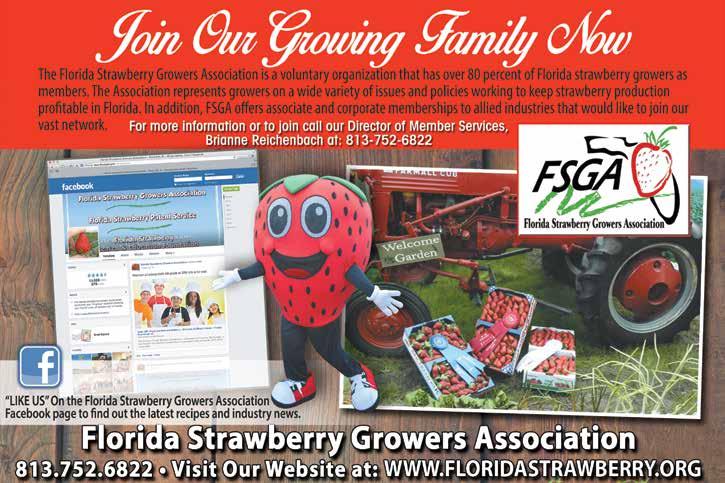

If you enjoy garlic and onions, you should give shallots a try. A member of the allium family, shallots are closely related to onions, garlic, and chives, and are enjoyed both raw and cooked. Shallots are used to season savory dishes in many cuisines. Shallots taste like a mild onion and can easily be a substitute for onion in cooked recipes. Small in size, shallots have a light purple flesh that is covered by a thin, papery skin. While onions produce a single large bulb, shallots produce a compound bulb consisting of multiple cloves, much like garlic. In savory recipes, you can enjoy shallots raw, pickled, sautéed, roasted, or fried. Shallots are planted during the spring and fall months.
Fresh shallots are high in vitamins, minerals, and a host of nutrition-boosting compounds, such as flavonoids and polyphenols. Some of these compounds may help combat heart disease, strokes, and cancer, as well as lower blood pressure and cholesterol.
Shallots are low in calories and have little to no fat, sodium or cholesterol. They contain a large number of active compounds that may help ward off cancer, heart disease, high blood glucose, and strokes. Shallots may also help lower blood pressure and cholesterol and support the immune system. Like other alliums, shallots have antibacterial and antifungal properties.
According to the United States Department of Agriculture (USDA) National Nutrient Database for Standard Reference, a 100-gram serving of fresh shallot contains 75 calories, 2.5 g protein, 0.1 g fat, 17 g carbohydrate, and 3 g of dietary fiber. It also provides 9% of the Daily Recommended Value (%DV) for folate, 7% for potassium and iron, 5% for phosphorus and magnesium, and significant amounts of calcium, iron, and zinc.
Shallots are flavorful, thanks to their sulfur-containing compounds. These include allicin and sulfoxides, which also give it most of its health-boosting properties. Hydrogen sulfide gas also keeps blood vessels dilated and relaxed and in turn, it keeps blood pressure lower.
Shallots promote cardiovascular health in other ways as well. This allium can lower blood triglycerides and total cholesterol. It also lowers inflammation from oxidative stress by neutralizing highly reactive oxygen molecules and preventing them from damaging blood vessel linings. This helps decrease the risk of heart attack and atherosclerosis. Additionally, garlic reduces the risk of clots in blood vessels by preventing clumping of platelet cells.
Shallots have many compounds that help fight off disease. It has both antibacterial and antiviral properties. This allium may also help combat infection from other microbes including yeasts/fungi and worms.
When shopping for shallots, avoid those that feel soft. Fresh shallots should feel firm to the touch, and are heavy for their size. Avoid any shallots with bruises or discoloration, as they may not be fresh. Instead, look for a purple or red exterior, similar to red onions.

Store fresh shallots uncovered in a cool, dark place away from heat and sunlight. Whole heads of shallot can be stored for up to a month in room temperature. When ready to use, take the whole shallot and separate into the individual cloves by applying firm pressure with your hand or a knife. Remove the skin from the individual cloves by smashing or tapping with a knife until the skin loosens. You can reap the most health benefits from shallots by letting it rest after chopping or crushing it. Although shallots are available powdered, minced, or dried, fresh shallots are the best for maximal flavor and nutrition.
Shallots are very versatile and can be enjoyed raw or cooked and are used in almost any type of cuisine. There are countless ways to enjoy fresh Florida shallot. It can be used raw, sautéed, fried, or even pickled. Although commonly used in pasta sauces and meat dishes, garlic can be used in a variety of entrees in many different cuisines.
More ways to enjoy shallots include:
• Sliced into rings and fried
• Roasted whole
• Pickled
• Diced and added to salad dressings
• Infuse your favorite oil with shallots to drizzle over any dish
• Sauté minced shallot to add flavor to any pasta sauce, meat, or vegetable dish
• Cut a clove in half and rub onto sliced bread for a twist on garlic bread
• Mince and mix with herbs to create a crust for roasted meats
• Mince and add to marinades, salad dressings, dips, or cream cheese
• Slice or dice and use in any stir-fry
Enjoy the flavor and nutrition of fresh Florida shallots today while boosting your heart health.
http://edis.ifas.ufl.edu/ http://sarasota.ifas.ufl.edu/ http://www.whfoods.com

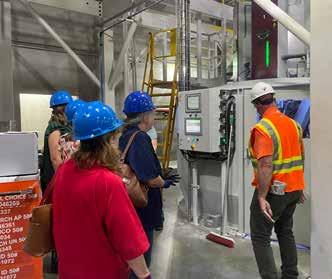


April was a busy month for Hillsborough County Farm Bureau in its ongoing role as the “Voice of Agriculture.”
Last month’s initiatives included participation in the Ag-Venture and Ag-Abilities programs for Hillsborough County’s young children, along with hosting a tour for the staff of U.S. Congressman Vern Buchanan.
Ag-Venture is a “hands-on” learning experience for third graders in the county. The mission of Ag-
Venture is to help students develop an understanding as to where their food comes from and the impact agriculture has on their daily lives. This year’s spring program, the 30th anniversary of Ag-Venture, engaged 850 third graders who were given the opportunity to visit various stations at the Florida State Fairgrounds, each depicting different aspects of agriculture.
In addition to Farm Bureau, Ag-Venture program partners include the Florida State Fair and the Hillsborough County Extension Service, Presenters during the spring session included the University of Florida – Institute of Food and Agricultural Sciences (UF/IFAS), 4-H, Florida Forest Service, Florida Strawberry Growers Association (FSGA), Hillsborough County Cattlewomen and countless Farm Bureau membervolunteers.
The Fairgrounds was also the site of Ag-Abilities, an event that attracted 33 Exceptional Education Students (ESE) from schools throughout Hillsborough County. Initiated by Hillsborough County Farm Bureau in 2001, Ag-Abilities is a half-day competition that allows volunteers to interact with students as they learn about agriculture. Sample activities include “the foods we eat,” tractor driving, and animal breed identification. Students are served lunch and participate in an awards ceremony. It is a heartwarming program for the students and volunteers who make the day a success.
Ag-Abilities partners included Farm Bureau, Hillsborough County Extension Service, the FSGA, Grove Equipment Service, Inc., and Farm Bureau members from across the state. Students are not Farm Bureau’s only target for agriculture education. One of the audience segments Hillsborough County Farm Bureau strives to reach is elected officials at the local, county, state, and national levels. Those actions of those lawmakers have a significant impact on agriculture, making it important for them to be aware of the challenges the agricultural industry faces on a continuing basis. Hillsborough County Farm Bureau hosted a tour for Congressman Buchanan’s staff that included the UF/IFAS Gulf Coast Research and Education Center at Balm where researchers are engaged in ongoing studies for ways to assist growers in maintaining their global competitiveness. The tour also stopped by Ardent Mills, a flour processing facility in Gibsonton, that produces 1.8 million pounds of flour a day, including all purpose, whole wheat, high gluten and bread flours.

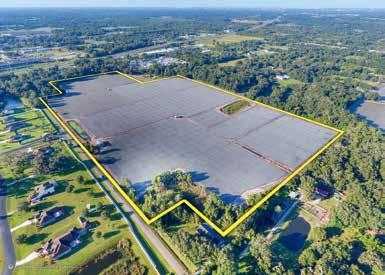

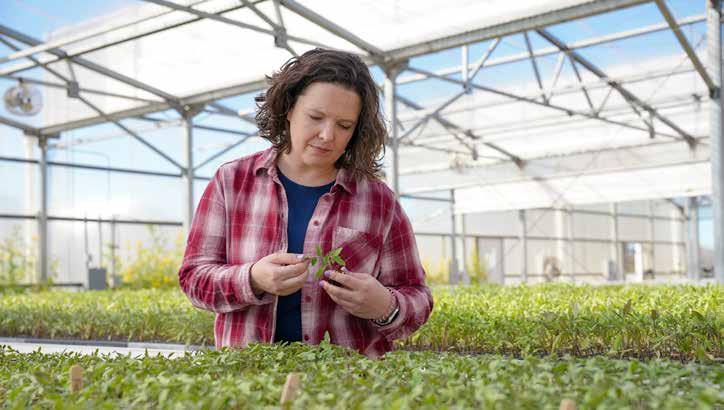
Ever since Florida farmers have been growing tomatoes, they’ve picked them by hand or hired laborers. It’s painstaking work that might be made easier soon with machine-harvestable tomatoes developed by University of Florida scientists.
Now that the varieties are available, growers in Florida’s $400 million-a-year industry hope they can use mechanized harvesting, but doubts remain.
The new varieties were decades in the making, said Jessica Chitwood-Brown, the tomato breeder at the University of Florida Gulf Coast Research and Education Center (GCREC).
“Tomato harvesting is strenuous, manual labor, and not many people seek these kinds of jobs,” Chitwood-Brown said. “This is true for agricultural industries around the world -- not just in Florida -- and in all kinds of crops. But it is a very real threat to Florida’s tomato industry.”
“We can see examples of the effort to mechanize and alleviate the pressure from the lack of labor in packing houses and other parts of the supply chain,” she said. “However, field production and harvesting in particular have a real challenge. Being able to harvest fresh market tomatoes with a machine would have a huge impact on growers and the labor problems.”
After many years of work by former UF/IFAS tomato breeders Jay Scott and Sam Hutton, the latter released the hybrid cultivars last year.
credits Hutton and Scott for the new cultivars.
Now, she is trying to make sure Florida’s growers can use machines to harvest the tomatoes.
“We aren’t all the way there yet. There is research that still needs to be done, but with the release of these new cultivars, I think we are much closer than even a few years ago,” said Chitwood-Brown.
As she points out, there are several traits necessary in tomato cultivars for mechanical harvest to be possible. One is a tomato that does not need to be staked and tied. Stakes and ties get in the way of the harvester.
They also need to have jointless pedicels, so they detach from the stem.
“These two traits have been around for a long time, but getting them in the right combinations with other traits that result in a viable tomato cultivar with the other necessary traits -yield, fruit size, quality, etc -- has taken a lot of work by the past breeders,” Chitwood-Brown said.
Michael Schadler, manager of the Florida Tomato Committee, said growers are expressing hope and skepticism about mechanized harvest.
“Everyone recognizes that it could help level the playing field vis-à-vis Mexico’s labor advantage, but there are so many

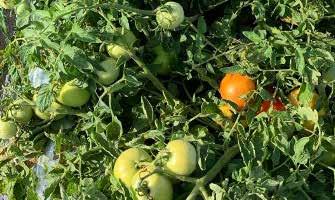
variables that we have to get right to make it work,” Schadler said. “If there is a reduction in yield from the mechanized production system, will the reduction in input and labor costs be significant enough to make the economics work? That’s a big if.”
That’s what the UF/IFAS team is going to have to prove to the growers before commercial adoption, he said.
“We won’t sacrifice quality or taste for our customers, and growers can’t afford to sacrifice yield or disease-management systems in the field,” Schadler said. “The new varieties – and any machine harvester that is developed – must be able to balance those factors. We’re conducting some large-scale trials this spring with the new varieties, so I’m anxious to see the results this May. But we won’t be ready to begin testing machine harvester prototypes until at least next year.”
The mission of the University of Florida Institute of Food and Agricultural Sciences (UF/IFAS) is to develop knowledge relevant to agricultural, human and natural resources and to make that knowledge available to sustain and enhance the quality of human life. With more than a dozen research facilities, 67 county Extension offices, and award-winning students and faculty in the UF College of Agricultural and Life Sciences, UF/IFAS brings science-based solutions to the state’s agricultural and natural resources industries, and all Florida residents. ifas.ufl.edu | @UF_IFAS
Feeding a hungry world takes effort. Nearly everything we do comes back to food: from growing it and getting it to consumers, to conserving natural resources and supporting agricultural efforts. Explore all the reasons why at ifas.ufl.edu/food or follow #FoodIsOurMiddleName.

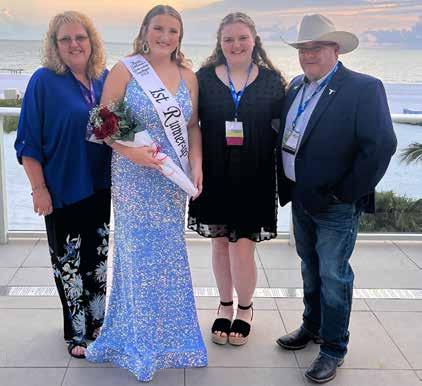
“I don’t remember a day where cattle weren’t involved in my life,” said the Hillsborough Cattlemen’s Association’s “Sweetheart” Raelyn Hudson. Born in Brandon, Hudson is the daughter of Matt, a salesman with Robbins Manufacturing, and Lynann, Director of Agribusiness at the Florida State Fair.
She has two siblings, Andrew, an alumnus of Florida State University and Stetson School of Law, and Kaylee, who attends Strawberry Crest High School and will be attending Abraham Baldwin Agricultural College this coming fall.
“I grew up next door to my grandfather LaVerne Patrick, who raised cattle for many years after dairy cows,” said Hudson. “His involvement in the cattle industry pushed me to join 4-H as soon as I could. I joined Young Sprouts 4-H when I was 5 to pursue agriculture. At the age of 8, I started showing beef cattle which led me to joining the Junior Florida Cattlemen’s Association and the Hillsborough County Junior Cattlemen’s Association. Once in high school, I joined FFA. I was an officer all four years and competed in many contests, including showing steers at all of our local shows such as the Hillsborough County Fair, Florida State Fair, and Florida Strawberry Festival.
“My senior year at Strawberry Crest High School I was awarded “Most Outstanding in Agriculture” which indicated that I had a true heart for it. Currently, I am a member of the Young Farmers and Ranchers with Hillsborough County Farm Bureau continuing my love for agriculture.”
“In addition to my agriculture and cattle activities, I have been a baton twirler since the age of 3,” said Hudson. “That led me to being a majorette at the University of Central Florida (UCF) with the Marching Knights. Currently, I am the majorette coach for the Lakeland Dreadnaught Marching band spreading the joy I get with baton twirling to other young women in my community. I also, do help my grandmother, Barbara
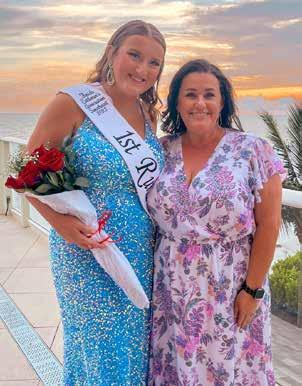
Patrick, teach twirling in Plant City to continue the traditions she has done for decades. I plan to continue coaching the Lakeland High School Majorettes and teaching baton twirling at local recreation centers.
“I am a recent graduate of UCF with a Bachelor’s degree in Criminal Justice, including certificates in Victim Advocacy and Crime Mapping and Analysis,” she said. “My passion is advocating for others. Children have a special place in my heart. From high school to now I volunteer at Ag-Venture, teaching third graders about the beef industry. The past three years, I have undertaken an agricultural education experience called “Little Farm Hands” for 3-8 year-olds during the Florida State Fair, teaching them where their food comes from, and, hopefully, an appreciation for agriculture and its importance.
“Showing beef cattle since the age of 8 has led me to gain great friends, network with others and grow my knowledge about beef. There are many individuals who have helped me get to where I am,” noted Hudson. “I never thought of myself doing something like the Sweetheart until the McCullough and Conrad families asked me if I would be interested. After many conversations with the Lord, I decided I would take the chance. Last year, getting ready for the 2023 Convention so many people came together to give advice and encourage me along the way.
“Thank you to everyone on the Hillsborough County Cattlemen’s Board supporting me along the way and allowing me to represent them. Debbie Gill, Vina Jean Banks and Tammy Newsome from the Hillsborough County Cattlewomen’s Association are such strong female leaders within our industry and just a few of many who inspired me to follow in their footsteps.
“My thanks too to Kaylee Poppell, Kerri Lefler, and Emily Smith for pushing me to be the best educator of the beef industry
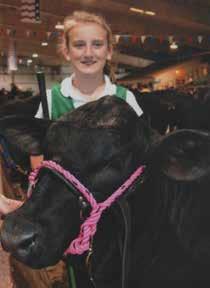
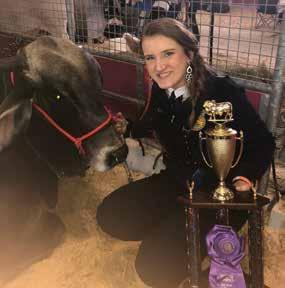
and making sure that I get my message across about educating the consumers of tomorrow.”
“Another family that has been instrumental in my journey are the Conrad’s,” said Hudson. “They are always there to answer my silly questions and to encourage me that no dream is too big. But I truly wouldn’t be where I am today without the help of my parents, sister, and all my grandparents. They always remind me to strive to be the person God wants me to be and always have my back.”
“I would not have become the woman I am today or the “Sweetheart” without the help of all of these people and so many more,” said Hudson. “Thank you everyone from the bottom of my heart.”
“The title ‘Sweetheart’ has many meanings to me, but the most important one is being an advocate. Advocacy is such an important part of being someone who represents such an important association. I enjoy going to cattle shows and different activities where I represent the Hillsborough County Cattlemen’s Association. And in honor of May being National Beef Awareness Month, I have loved the opportunity to share my story and urge people to learn about how important beef is in their everyday lives. Being ‘Sweetheart’ has changed my life. I have grown even more within the beef industry and as a person while in this role. I have met many influential individuals, made lasting memories, and learned true passion through this journey.”
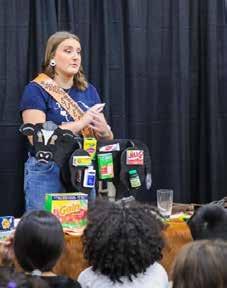
“My plans going forward are to attend the Florida Cattlemen’s Association (FCA) Convention and Allied Trade Show at the end of June to try and become the 60th FCA Sweetheart,” said Hudson. In addition, she will continue her coaching activities and plans to attend a university in pursuit of a Master’s Degree.
“In closing, I would like to thank all of the individuals who bought raffle tickets last year. I sold more than 1,200 tickets,” she said. “If anyone would like to purchase raffle tickets this year, they are $1 each and also offer the chance to win $250 worth of beef where all proceeds benefit the Florida Cattlemen’s Sweetheart program. And, if you would like me to talk to anyone or a group about the beef industry or would like to support me in any way as I prepare for the FCA convention in June, please contact me at raelynkhudson@gmail.com.”
“It has been my absolute pleasure being able to represent all the farmers and ranchers here in Hillsborough County as Sweetheart. This is something I never dreamed of and have enjoyed every minute. Some of the portions of the competition will be “live-streamed” so if you would like to watch, follow FCA Sweetheart on Facebook to follow my week as I compete. I love Hillsborough County and the beef industry we have here. Thank you for everything, and make sure you thank your local cattlemen!”



The 42nd Annual Agritech Trade Show & Seminars attracted more than 300 attendees and nearly 50 exhibitors to this annual Florida Strawberry Industry gathering. Held at the Strawberry Festival grounds, Agritech featured the Florida Strawberry Growers Association (FSGA) and allied partners and regulatory agencies.
The gathering’s keynote presentation on its first day detailed the University of Florida (UF) Center for Applied Artificial Intelligence to be located at the UF, Institute of Food and Agricultural Sciences (IFAS), Gulf Coast Research and Education Center at Balm in southern Hillsborough County. Part of that presentation included special recognition of Florida State Representative Lawrence McClure for his ongoing support of the GCREC and, in particular, the AI center, which is to be built at the GCREC. Keynote presenters included Dr. Jack Rechcigl, GCREC Director, Dr. Nathan Boyd, GCREC Associate Director, Dr. Robert Gilbert, UF/IFAS Interim Senior Vice President, and Mary Ann Hooks, UF/IFAS Director of Government Affairs.
Among featured presentations was the introduction of Ember, Encore and a new, white-fruited breeding selection by Dr. Vance Whitaker, GCREC, UF/IFAS, Horticultural Sciences Researchers also gave a range of presentations, including:
• Strawberry Horticulture Research Updates: Nitrogen Rate, Planting Date, and Transplant Digging Date – Dr. Shinsuke Agehara, GCREC, UF/IFAS, Horticultural Sciences
• Why Weed Management Matters – Dr. Nathan Boyd, GCREC,UF/IFAS, Horticultural Sciences
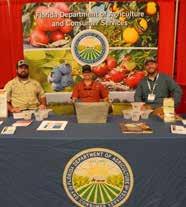
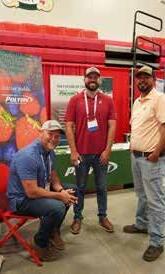
• Do’s and Don’ts of Arthropod Pest Management in Strawberry – Dr. Sriyanka Lahiri, GCREC, UF/IFAS, Entomology & Nematology
• The Dawn of AI-Assisted Deep Strawberry Learning – Dr. Kevin (Xu) Wang, GCRED, UF/IFAS, Agricultural and Biological Engineering
• Digital Twin Technologies for Strawberry Farming - Dr. Daeun (Dana) Choi, GCREC, UF/IFAS, Agricultural and Biological Engineering
• Strawberry Disease Season Roundup: Neopestalotiopsis, But That is Not All! – Dr. Natalia Peres, GCREC, UF/IFAS, Plant Pathology
• Five Years of Organic Strawberry Research at the GCREC –Dr. Johan Desaeger, GCREC, UF/IFAS, Entomology & Nematology
• Integrating AI in Pest Management, Aerial Views – Dr. Wael Elwakil, UF/IFAS Extension, Hillsborough County
• Monitoring Strawberry Plant Wetness Using Color Imaging and AI for the Strawberry Advising System (SAS) - Dr. Daniel Lee, UF/IFAS. Agricultural and Biological Engineering
• DNS Marker Development and Marker-Assisted Seeding Selection Program to Improve Strawberry Varieties – Dr. Seonghee Lee, GCREC, UF/IFAS, Horticultural Sciences
• Efficacy of Soil Solarization for Control of Nematodes, Weeds, and Plant Pathogens – Dr. Frank Sances, Florida Ag Research
Attendees were also given the opportunity to earn Florida Department of Agriculture and Consumer Services (FDACS) Continuing Education Credits (CEUs) during both days of Agritech.
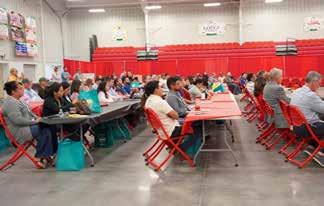
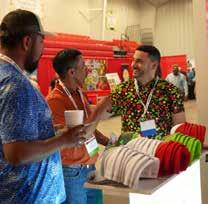



They’re back! Lovebugs, that is.
Yep, just like clockwork when May rolls around, at least in central Florida, the lovebugs make known their love-induced irritating presence at picnics, ball games, strolls in the parks, and most notably, splattered in an icky mess on the windshields of every car and truck innocently just trying to get somewhere.
Capistrano in California is noted for the annual migration of swallows. Parts of America get an annual visit of Monarch butterflies. As for us, we get lovebugs; and are doubly blessed to get them twice a year! Once in May, of course, and then to make sure we don’t forget them, we get their not-so-sweet reappearance in September!
I’ve tried about everything to keep them at bay so as to keep them from throwing a damper on an otherwise fine outdoor gathering. Insect repellants don’t seem to work, nor do those organic magic elixirs touted on Amazon.
My most effective deterrence is aiming high-speed fans facing outward from the picnic table! Lovebugs are tenacious, but flying into what must seem to them to be a Cat. 5 hurricane usually does the trick.
A few days ago, on a day of particular annoyance by the copious copulating of conjoined flying creatures, I had the bright idea to just head out, way offshore in a boat. That should work, right?!
Well no. Sadly, and mysteriously, it did not!
No sooner than about 30 seconds after cutting the engine, well away from any land, grass, trees, even seaweed where they might hide, a massive swarm appeared, flying, drifting in the wind and just floating in the air looking for a few humans to irritate!

How this is possible, I have no idea. It seems that there is just no way to avoid them.
To add further insult to injury, when I decided to crank up the motor and flee, thinking that they’d all blow away, somehow, miraculously for them, the majority of the lovebugs clung to the seats, and lines and canopy, and acted like they were just enjoying the ride!
In some respects, I suppose that they really were having a blast. Likely it was, after all, the highlight of their lives, considering that the lifespan of an adult lovebug is only three or four days. Really, it’s that short.
Think about how much they accomplish in their brief 96 hours of life. Barely do they breathe a few times before they find a mate, honeymoon in the air, and plan a family to pass on their legacy. Strange to think that in a week’s time their grandkids could be setting out on their own adventure!
It is nice to know that, according to the smart folks at the University of Florida, “lovebugs have no risk to human health whatsoever.” The University’s entomologist, Norman Leppla, has been quoted as saying, “they don’t transmit diseases. They couldn’t bite you if they wanted to.”
They just seem to be attracted to cars and trucks. Apparently, it’s the exhaust fumes and heat that do it, which explains also why they tend to swarm anyone on or near a lawnmower.
In case you’re wondering, it’s their eggs in the white splatter that they leave behind when smashing into windshields and the front end of vehicles. There’s upwards to 400 eggs inside the female which had been planning on laying them in the grass somewhere.
Supposedly, according to the same UF expert, the best way to clean off a splattered lovebug windshield is to use dryer sheets. Moisten the dryer sheets, and you can “just lift them right off,” leaving a “finger painting on your car that is mushy and loose.”
Then again, since avoiding the distasteful windshield mess is far better than trying to clean it up, he also suggests that we should do our best to drive at night when the lovebugs tend not to be flying and are doing whatever else lovebugs tend to do!
John Dicks is both a Lawyer and Businessman, including an interest in farming. He and his family have owned a Blueberry Farm and have Agricultural lands which they lease for cattle operations, as John says, “to someone who knows and handles cattle much better than I do!”. John is both a Gator, having received his undergraduate degree from the University of Florida, and a Seminole, with his Law Degree from Florida State University. John serves as Of Counsel to Trinkle Redman, a law firm in Plant City where he also served nine years as City Commissioner, including three terms as Mayor.

I had been saving tissue rolls for a project that was abandoned and had a few left over after dumping dozens of rolls, so I decided to go ahead and add an element to the mushroom project we did last month and make a flower out of tissue rolls.
There are many things that can be added to a project like this, for example, ribbon for leaves, plastic beads, clear beads for water droplets, plastic insects, even small LED lights could be beautiful.
Tissue Roll
Scissors
Glue Gun & Glue
Twine
Bamboo (optional)
• Cut and flatten tissue rolls
• Divide one of the rolls in half (this will be the flowers center)
• Cut thin strips going half way across on one piece
• Cut thick strips going half way across on the other piece
• Roll and glue the thin piece core first
• Roll and glue the thick piece core around the thin piece core
• Cut tear shaped petals for the flower (or any shape you wish)
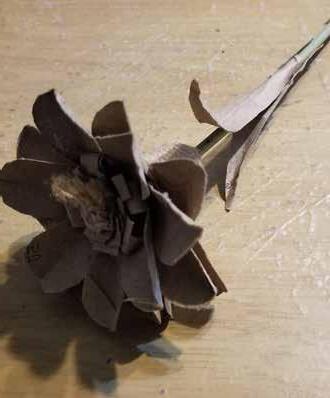
• Glue the petals to the core one at a time ** (stagger the petals so they overlap slightly) **
• Make a knot in the twine and thread it through the top of the flower, glue the knot in. Its better to leave loose ends, these can be the pistil of the flower.
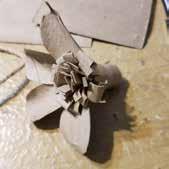
If you are using a stem, glue the stem into the bottom of the flower along side the twine that was threaded through Wind the twine neatly around the stem and petals of the flower, working your way from the bottom towards the top until all the petal based are covered, glue along the way.
Cut long leaves, creasing them down the middle and glue in place (again, stagger the leaves but let them over lap a little)
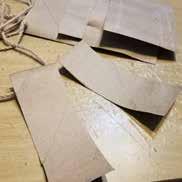

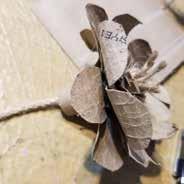
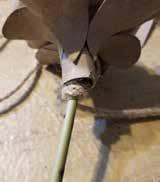
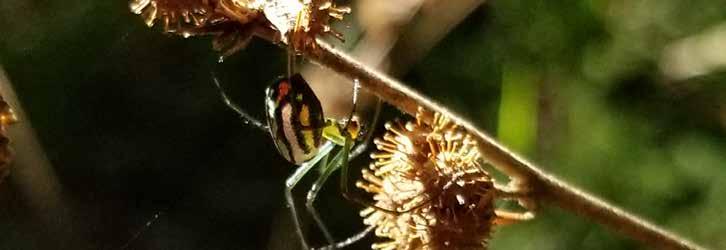
Do you remember when the world was wonderous? When most of what we saw was new? When beetles, spiders, and other insects were brilliantly colored creatures that inspired investigation rather than fear? This is the mindset of a naturalist, and our passport to a lifetime of adventure in the world around us if we choose to redeem it. This month we’ll take a closer look at a small spider that was described by Charles Darwin himself as having a brilliant abdomen with red color “like ruby with a bright light behind.” The Orchid Orbweaver (Leucauge) described by Darwin is a genus of the long-jawed orb weaver family (Tetragnathidae). In North America, we have only two species of this beneficial spider, the most common being the Orchard Orbweaver (Leucauge venusta). Less common is (Leucauge argyra), found only in Florida. Populations of these spider’s peak in May and will continue throughout the summer. This month we hope you will take a closer look at the orchard spiders that so fascinated Charles Darwin himself. It’s a treasure that will be abundant in the parks and wilderness areas right here in Florida.
In the early 19th century the HMS Beagle, a Cherokee class 10-gun warship of the royal Navy, took part in the coronation of King George IV of the United Kingdom and was later adapted to survey the maritime features of the coast of South America. On its second voyage, Charles Darwin, the renowned naturalist geologist and biologist best known for his contributions to the science of evolutionary biology joined the expedition. Darwin was only 22 at the time and had just completed his Bachelor of Arts degree as a prerequisite for his pursuits as a parson (priest). The young student had no sooner returned from a geology field trip with British priest and geologist Adam Sedwick, (the founder of modern geology), when Darwin’s esteemed tutor and mentor John Stevens Henslow proposed Darwin would be a fitting (yet unaccomplished) naturalist for the Beagles expedition. Darwin’s role would be that
of a gentleman, rather than a “mere collector,” keeping the ship’s captain Robert FitzRoy in company and conversation.
Darwin was at liberty to spend most of his time on land exploring the geology and originating his private natural history collections while the crew of the HMS Beagle set about their task of surveying and charting the coasts. Darwin took care to keep control over his collections for their intended scientific value rather than surrender them for use in the British Museum. He kept meticulous notes of his observations and regularly sent specimens, letters, and copies of his journals to Cambridge and his family. The expedition took Darwin through Rio de Janeiro in May of 1832, where Darwin collected the first specimen of what we now know as the Orchid Orb Weaver. It is obvious from his notes that Charles Darwin was impressed with the beauty of the spider; he described his specimen as having a brilliant abdomen with red color “like ruby with a bright light behind.” The young Charles Darwin suggested the genus name Leucauge and sent the specimens off to Cambridge.
In 1841, Scottish zoologist Adam White was tasked with identifying and publishing the spiders collected by Darwin on the Beagles expedition. The spiders genus was documented and published in Whites Description of new or littleknown Arachnida. (1841) where the type specimen was named (Leucauge argyrobapta). Unfortunately, Whites vague description of the single specimen did not include illustrations and inadequately confirmed the identity. To make matters worse, the only known specimen was lost after White published the description. Consequently, the genus (Leucauge) was lumped into a generic “wastebasket taxon” that included several hundred loosely related species. It has only been recently (2010) that research has confirmed that the type species Leucauge argyrobapta found by Darwin, is a synonym for the common North American species Leucauge ve-
nusta. The research also concluded that a second species Leucauge argyra, is distinct from Leucauge venusta and in North America, only found in Florida.
Only a hand full of orb weavers build horizontal webs, these are two of them. Each build webs only a few feet from the ground in shaded meadows, low shrubs, and forest understory. This web strategy is particularly effective for capturing mosquitoes, moths and flies that rise from the grasses for mating. These nocturnal spiders rest upside down, centered on the bottom of their web during the day unless disturbed. The Florida species Leucauge argyra is a colonial species, as are other Leucauge to a lesser extent. Colonial species build communal webs that are shared by many spiders. Individual territories are kept. Larger spiders up top, smaller juveniles closer to the ground. It is thought that this strategy allows the community of spiders to work together to subdue prey that would be too large for a solitary web and offers a measure of protection from common predators such as lizards, and other spiders. Some colonial colonies can grow large enough to trap birds and bats as well as large insects.
The colonial strategy is not failproof though, orchard spiders are parasitized by Ichneumonid wasps that invade the spiders body and control the spiders brain with the release of certain chemicals forcing the spider to redesign its web to function as a fortress for the pupating wasp rather than a trap for capturing food like it’s supposed to. (I know it’s another insect zombie story), but these things are quite common in nature and hard to avoid mention. Darwin was right on target when he proposed the genus name (Leucauge); the name comes from the Greek leukos, meaning “with bright gleam” or white and venusta is Latin for “beautiful.” If you get a chance to get out and take a closer look at this spider, take delight in knowing your looking at the only spider name that can be directly attributed to Charles Darwin.
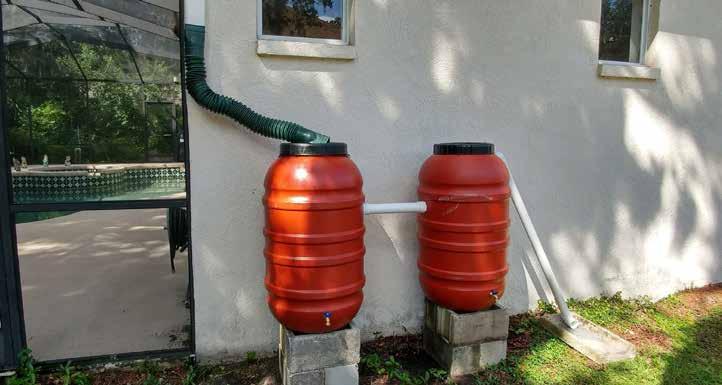

We, the University of Florida Institute of Food and Agricultural Sciences (IFAS) Extension, provide many educational workshops for residents. This article provides an overview of the Compost, Microirrigation and Rainwater Harvesting Workshops offered at many Extension offices across our state.
Composting workshop attendees learn how to create their own compost, the differences between compost, humus, and mulch, how to reuse lawn/landscape clippings and kitchen food waste, and what you should do with grass clippings. Also included is an evaluation of different compost units/bins, what can and should not be composted, the critters you will attract in the cooler stages of composting, and how to build your compost pile. Attendees receive information on cold, slow and passive composting, and how to manage and monitor it from temperature, moisture and odor perspectives. Instructions are provided on mixing and turning the compost, finishing and curing it, and screening it if you are so inclined. To me, a very lazy gardener, screening compost is like sifting flour. I understand why it is done, I just choose not to do it! All the above and more will be fully explained, including how you can use the compost you created, whether finished or unfinished, and why the difference is important. After the workshop, attending households receive a compost bin, compost thermometer and kitchen compost pail/bucket with a lid.
Microirrigation is one way to conserve water in the landscape. It is a system that provides small amounts of water compared to an inground irrigation system, is
easy to install, connects to an outdoor spigot/hose bib, and provides 30 gallons per hour or less. There are four types of microirrigation: microspray, bubblers, dripper emitters and drip tubing. The advantages of using a microirrigation system include:
• Water is applied in gallons per hour vs. gallons per minute from an in-ground irrigation system
• Evaporation and erosion are decreased
• Design, installation and use are simple
• Products are interchangeable among vendors
• Used as “nurse system” to establish new plantings
Maintenance is minimal. A monthly walk through your landscape beds will allow you to adjust or repair as needed due to lawnmower, weed eater or garden critter damage, such as armadillos leveling spray stakes. In Hillsborough County, we offer three types of microirrigation workshops to our residents: microspray irrigation for landscape beds, patio/container and vegetable garden microirrigation.
Rainwater Harvesting attendees will learn how to make their own rain barrels, set up their barrel at home, the ideal locations with or without gutters and to create a stable platform/base for their rain barrel. Information is provided regarding why an overflow is important, how to create one, connecting multiple rain barrels, and the maintenance needed. Instructions are provided on painting rain barrels, safety considerations and use of products to eliminate mosquito larvae. Harvested rainwater can be used on ornamental plants, but not edibles, and this will also be fully explained during the workshop.
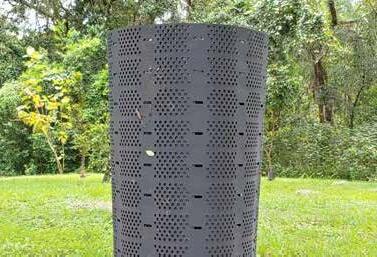
The benefits of capturing rainwater include reductions in potable water use for a landscape, erosion and stormwater runoff. These benefits are extremely important because of the decrease in: the amount of water you purchase, erosion and stormwater runoff which moves fertilizers, pesticides, oil, gas, trash, etc. from your property into a storm drain, and ultimately into Tampa Bay.
Extension offices vary in the potential fee for these workshops. Please contact your local Extension Office for more information and their Calendar of Events. In Hillsborough County, these workshops are held month-

ly from February through November. Please see our calendar of events at: https://www.eventbrite.com/o/ ufifas-hillsborough-extension-8606873308 and scroll down to view upcoming programs. It’s a good thing to reduce, reuse, recycle and repeat! Hope to see you at a workshop soon.
Lynn Barber is the Florida-Friendly Landscaping TM agent for UF/IFAS Extension Hillsborough County. Contact her at labarber@ufl.edu.

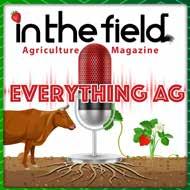
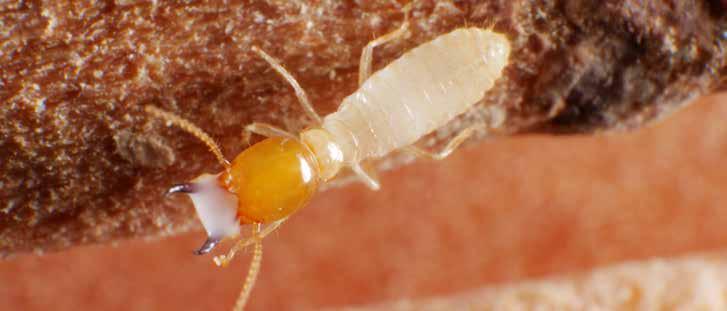
Termites are prevalent throughout Florida. But new species are now spreading in Central Florida and that means it’s time to update our knowledge of termites with regard to identification, control and treatment.
Historically, native subterranean termites have been the usual suspects for termite problems in structures throughout the state, for which the pest control industry has been most familiar. However, along with the intensification of urbanized areas over the past decades, “newcomers” are now spreading out to various cities across Florida. It is important to know that not all termite pests are equal as their biology and management are quite different.
One of the most prevalent termite species in South and Central Florida is the West Indian drywood termite. And, as its name suggests, this termite species thrives on dry wood contained within a kitchen cabinet, windowsills, roofs, fascia, etc. Small independent colonies are self-contained in their initial piece of wood with no connection to the ground nor do they require water. They can be detected once they expel their frass out of the piece of wood. The frass looks like small, sand-like, or coffee ground particles with colors varying from white to black. Once a year in May, mature drywood termite colonies produce winged individuals who will fly out, find a mate and colonize another piece of wood as the new king and queen of their own colony. After a dispersal flight, wings can be found, indicating that these termites are present and are attempting to establish a new colony.
Because a drywood termite colony is contained in a single piece of wood, they can be eliminated using spot treatments from a pest control provider. However, if one colony was detected, it is possible that numerous colonies are established in various parts of the structures, without visual confirmation. As a result, total structures infested by drywood termites are usually treated.
Treatment involves fumigation tenting (enclosing) the structure over several days, followed by aeration and then on to repair of the damage that was caused by the termites. Such treatment “resets” the structure by killing all living organisms within. However, it does not prevent future infestations, and in areas with high density of this termite species, re-infesta-
tion is likely and fumigation may need to be performed again, a decade or so later.
However, two other invasive subterranean termite pest species are now spreading in Florida and they differ drastically from the drywood termite in their biology and control. The first is the Formosan subterranean termite, which can establish colonies in the environment, grow up to millions of termites, require a great deal of water and wood and colonize trees and structures with a high potential for damage. This species has spread to most large cities in Florida over the past 40 years. A colony of this species has access to water and other resources in the ground, foraging underground by following tree roots and piping into structures within 150 feet of their foraging territories. Prevention by chemical drenching the soil with liquid termiticides around a building can result in structural protection but has little effect on Formosan subterranean termite colonies over time. It is unfortunately only a “band-aid to the termite problem,” said Thomas Chouvenc, PhD., Associate Professor of Urban Entomology at the University of Florida, Institute of Food and Agricultural Sciences (UF/IFAS), Ft. Lauderdale Research and Education Center (FLREC).
Dr. Chouvenc advocates the placement and maintenance of in-ground bait stations as the way to eliminate colonies established around structures. “The use of in-ground bait stations has a negligible environmental impact compared to liquid termiticides, and is able to eliminate a termite colony within a 90-day period after the colony starts feeding on a bait station.” However, this is an ongoing process and bait stations must be kept and maintained in the ground to assure ongoing effectiveness, as after the initial colony elimination, it is likely that future colonies will pose an ongoing threat to the structure,” he said.
The other termite species which is new to Central Florida is the Asian subterranean termite. Established in Southeast Florida for more than 25 years, the Asian subterranean termite was recently discovered in several cities across Central Florida. Dr. Chouvenc likes to refer to the species as the “tropical cousin of the Formosan subterranean termite” which has spread from Brazil to Palm Beach County and across the Caribbean. “Because of its tropical distribution, we did not

expect this species to move northward so fast,” he said. With climate change, it is possible that the species may continue to establish further north in the decades to come. Control methods are similar between Formosan and Asian subterranean termites, but the Asian species tends to be detected early in trees upon inspection. In such cases, regular tree inspection and the use of above-ground bait stations can provide termite colony elimination before damage occurs in nearby structures.
All three species came to Florida by boats, most often private recreational boats, and continue to spread via boats around the state and beyond, both in saltwater areas and inland freshwater locations.
Effectively dealing with these species of termites is “by no means a DIY activity,” said Dr. Chouvenc. For both the Formosan and Asian species, if you live in areas with known established populations of either, Dr. Chouvenc recommends having the structure and surrounding trees regularly inspected. “The University of Florida (UF) termite distribution map allows you to know what species are established in your area,” he said. “And once a termite species has been found, it must be properly identified and treated accordingly,” he said. The termite team at UF can identify termite samples and provide recommendations via: https://flrec.ifas.ufl.edu/termitesin-florida/send-samples/
In addition, more information is available on termites in Florida at: https://edis.ifas. ufl.edu/publication/IN13600 and their location at: https://flrec.ifas.ufl.edu/termites-in-florida/termite-distribution,
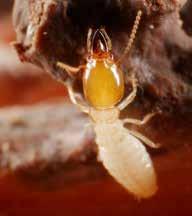
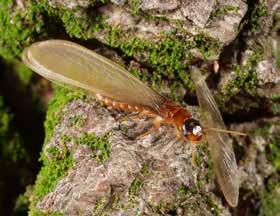


For the 9th consecutive year, the University of Florida, Institute of Food and Agricultural Sciences (UF/IFAS) Hillsborough County Extension hosted its annual Military Agriculture Tour. This is an event to introduce active duty and transitioning military, veterans and their spouses to the diversity of agriculture in Hillsborough County and to the various career opportunities available within Florida agriculture.
“This year we had 16 active duty, veterans and spouses on the Military Agriculture Tour,” said Simon Bollin, Agribusiness Development Manager for UF/IFAS Extension Hillsborough County. This year’s tour included stops at Audubon Cattle Ranch, Oak Ridge Fish Hatchery, Fancy Farms Market, the UF/IFAS Gulf Coast Research and Education Center (GCREC) and Astin Farms.
One of the tour participants was Rollin Lutz, a 25-year veteran of the U.S. Air Force where he served as a fighter pilot (call sign – Miami Joe), test pilot, and scientist. He now resides in Parrish, Florida. “I am a DoD (Department of Defense) contractor with tours in Gitmo (Guantanamo Naval Base in Cuba), Afghanistan, the Middle East, and Europe,” he said. “I am the CEO of my own company and I work in all forms of data science analysis, messaging, digital advertising, and movie produc-
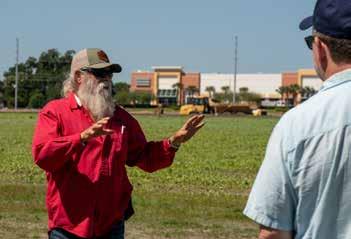
tion. My interest is in the changing nature of technology on agriculture, including AI (artificial intelligence) and imagery.
“The tour was great insight across cattle ranching, fishery, and strawberry/blueberry farming and what problems they have ranging from bird flocks, weather, pests and diseases in Florida plants. Also, the high demand for labor versus machinery and how that is changing.
“In particular, I see more and more land loss to agriculture as housing and urbanization remove land from crop production, increasing the need for increased crop efficiency to keep the food supply growing,” Lutz said. “Doing more with less is not lost on me as a veteran.”
“I think it is worthwhile to learn and contribute as this is my home and making it a better place helps everybody as ‘rising water lifts all boats,’” he concluded.
“We continue to have amazing support for this event from Farm Credit of Central Florida, Chemical Dynamics and Hillsborough County Farm Bureau,” noted Bollin. The Hillsborough County Sheriff’s Office Agricultural Unit provided escorts for the tour.
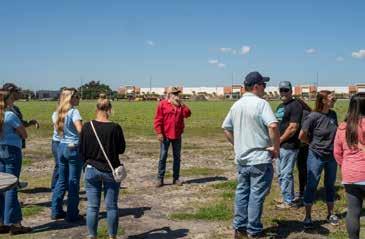

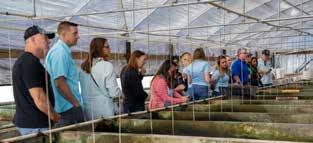
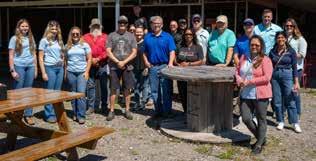


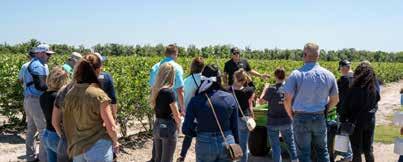
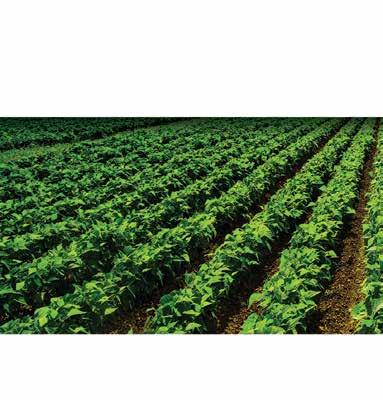








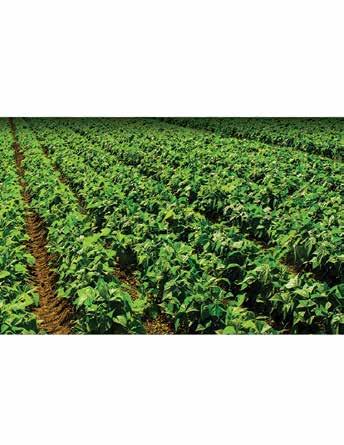





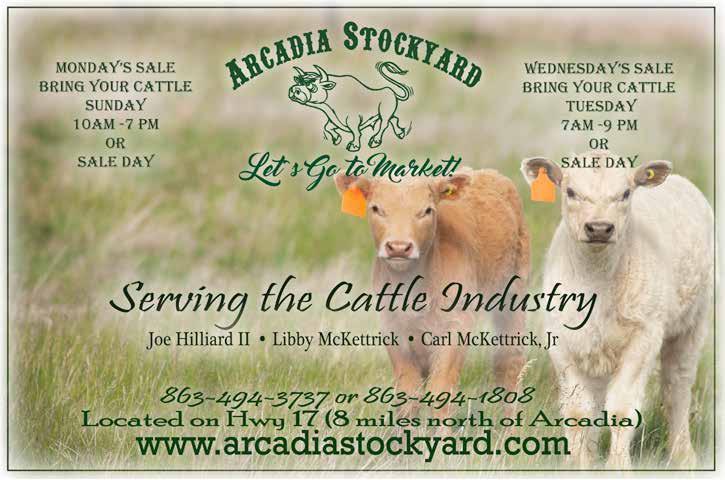
Mastering irrigation and fertility management in specialty crop production is an art— it requires time and expertise. In Florida’s unique agriculture, with its diverse soil compositions, unpredictable weather and varied production systems, this challenge is magnified. Growers aim to optimize irrigation to boost production, maximize fertilizer unitization and reduce waste while safeguarding our vital water resources for the enduring prosperity of our agricultural framework and surrounding communities.
Over the last decade or more, the soil moisture sensor technologies, alongside precision irrigation and fertilization instruments, have undergone significant evolution. These advancements are evidenced by more streamlined hardware, intuitive software interfaces and increasingly robust customer support from suppliers.
Looking at the environmental regulatory point of view, Florida water management districts and the Florida Department of Agriculture and Consumer Services (FDACS) have been pivotal in promoting these technologies. Through incentives and costsharing programs, they offset the cost of these technologies, thus fostering higher adoption rates across Florida.
From the University of Florida side. in addition to the irrigation management research conducted, the Soil Moisture Sensors Network, in particular, works on increasing the adoption of these technologies in Florida to increase water savings and protect our water resources from potential fertilizer contaminants that may harm the environment. This network — comprising UF/IFAS Extension faculty across the state — works closely with Florida growers and many industry partners to teach more growers about the aspects of soil moisture sensor use and deriving data-driven decisions and recommendations.
With support from entities like the Florida water management districts, FDACS, and the Nature Conservancy, we offer demonstration sensor units for growers to test and try out closely. This hands-on approach aids growers in understanding data and refining their irrigation techniques, leading to a steady increase in sensor adoption each growing season. For many, these sensors have become an indispensable component of their irrigation and fertility strategies.
Moreover, some sensor systems offer added value, bundling features like compact weather stations and disease-forecast models. These tools may prove exceptionally beneficial for high-value crops, providing insights that go beyond moisture levels. Our ongoing evaluations aim to understand the full potential of these systems for Florida’s unique agricultural conditions.
We are continually seeking collaborations with growers interested in exploring these technologies at no cost. The potential benefits — improvements in crop production, cost savings and environmental conservation — are significant. Growers eager to

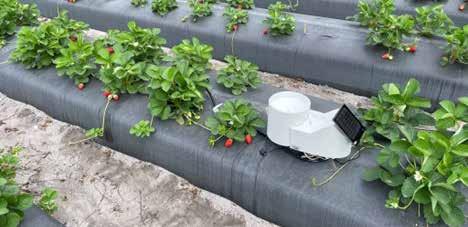

learn more and test these sensors closely are encouraged to contact their local county Extension agricultural agents.
While the market offers a myriad of brands and service providers, with systems varying in user-friendliness and data complexity, we offered an example of sensor field installation to showcase the practical applications of these tools (http://tiny.cc/ wtopwz or scan the QR code).
Contact Elwakil at wael.elwakil@ ufl.edu
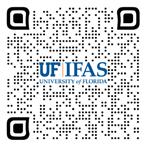
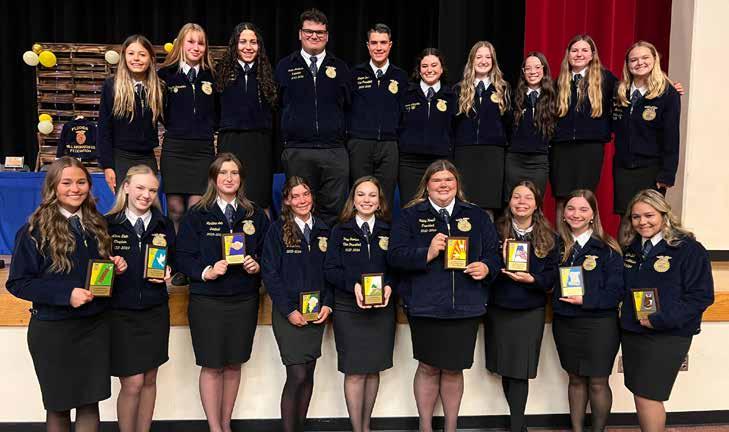

The Hillsborough County FFA Federation has announced a new slate of officers for the 2024-2025 year. The new officers are:
• President – Imogene Lanzetta, Newsome High School
• Vice President – Cooper Davis. Durant High School
• Secretary – Natalee Francis, Plant City High School
• Treasurer – Jaden Ausburn, Strawberry Crest High School
• Reporter – Olivia Semidey, Elton Hinton Jr. Chapter at Strawberry Crest High School
• Sentinel - Lena Bent, JF St. Martin Jr. Chapter at Durant High School
• Student Advisor – Sydney Bernardo, Armwood High School
• Historian – Emerson Goeltz, TH Cribbs Jr. Chapter at Newsome High School.
• Parliamentarian – Payton Flanagan, Barrington Middle School
• Chaplain – Lauren Schneider, Riverview High School
The Federation and its officers have an array of duties and responsibilities that include uniting Hillsborough County’s 45 FFA chapters and more than 2,000 members for mutual benefit; foster a spirit of cooperation among county FFA chapters; unite effort in electing District and State Officers; efficient cooperation with other county agricultural and educational organizations; to promote interest in all chapters to have members attain the State FFA Degree and complete Proficiency Award
applications. They also work to promote County, State, and National Awards Programs and recognize Hillsborough County winners; to promote the FFA Alumni Association in the county and to work closely with the Hillsborough County FFA Foundation and promote its support of the Federation.
\The Federation hosts monthly meetings at various schools in the county with team building activities, canned food drives during the holidays for food banks, FFA Night at the Hillsborough County Fair, FFA practice, and mock contests, among other activities. There is also a kick-off BBQ for the first meeting of the school year and it is currently held at Brandon High School funded with alumni donations.
In addition, the Federation hosts a variety of fund-raising events to help provide floral arrangements and snacks at the Strawberry Festival Junior Royalty contest; serving as stadium hosts at the Florida Strawberry Festival soundstage grandstands to help usher concertgoers to their seats, as well as selling bottles of water for hydration. All proceeds from Federation fund-raising initiatives are used to pay for meeting supplies, banquet food and scholarships for seniors. The Federation hopes to award 10 scholarships to seniors from FFA chapters active in the Federation.
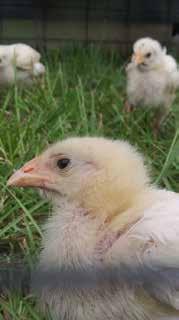
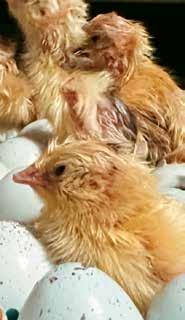
Alexandra and Eric Doss are the owners of Stellar Game Birds, Poultry and Waterfowl LLC in Ruskin. “We are first generation farmers,” Alexandra Doss said. “I work side by side with my husband Eric. There is some agriculture background with previous generations, however no one has the type of farm we have. I have been working with birds since I was nine years old, starting with psittacines and finches. I lived in the city of Chicago for 18 years before going to college in Oregon. I graduated in 2009 from Oregon State University with a Bachelor of Science Degree in Animal Sciences with a Pre-Vet and Poultry Science emphasis. At the time, I started my poultry raising with Coturnix Quail and raised quite a few in my apartment since 2006. I moved to Florida shortly after graduation and started a poultry farm.”
Stellar Game Birds, Poultry, Waterfowl LLC will be celebrating 15 years in business in June of this year. What started with quail has expanded over the years into a traditional farm, with the addition of offering pastureraised poultry and pork, custom processing for poultry and USDA Transport. “We focus on game birds, rare and heritage breeds and species,” Doss said. “I’m known for being the Quail Lady as that was my specialty for many years before expanding to other species and breeds. Our main animal on the farm is poultry however we have dairy goats and cows, heritage pigs, Emus, sheep, and much more.”
So what exactly are game birds? By definition, a game bird is a bird that is hunted in the wild for sport and/or food. A game bird also refers to any of the 290 species of quail, pheasants, turkeys, and other gallinaceous birds that are prized for their meat and eggs. These stoutbodied birds often have short, rounded wings because they spend most of their time on the ground. Their thick
By Libby Hopkins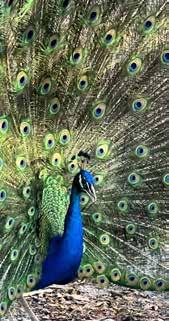

legs and big feet are adapted for regular walking and shallow digging to forage for seeds, roots and insects.
The Doss’ farm is not like most homestead farms. “There are not many farms out there that run a diversified traditional set up,” Doss said. “It’s not an easy task since we work with different species who have different needs, nutritionally, medically and space requirements. We go by wait lists and preorders to ensure our stock has good homes as we work mainly on preservation and bringing back old lines. We are not a commercial hatchery. We run a selective breeding operation. This makes us a little different than others.”
Many of the couple’s customers are likeminded and want to keep the rare game bird bloodlines thriving. “We have a great customer base,” Doss said. “Many of our customers are like-minded like us who want to preserve stock and keep them around, want to eat cleaner and raise traditional farm animals vs. commercial stock. We have heard from clients that we are knowledgeable, willing to help and caring. We want everyone to have success.”
If you ask Doss what is her favorite part of running their farm, she will tell you it’s the birds. “I love working with rare breeds, genetics and learning new things through other farmers, connections and clientele,” Doss said. “I learn something new every day. I may have a lot of knowledge to share, however we are all growing daily as individuals and learning new things helps us grow further.”
The couple have many hopes for their farm as well. “We hope to get more land in the future so that we can spread the animals out more, allowing them to forage


and graze,” Doss said. “We want to continue working on silviculture and regenerative farming some more and be able to continue to grow our pasture-raised food. We also want to extend our breeding program further to work on new lines and genetics.”
Keeping things local is also important to the couple. “Although we ship and transport our live animals and hatching eggs nationwide, we know how important it is to eat locally and clean, and our food avenue is very important to be local,” Doss said. “We also believe in providing Florida strong animals that will survive in our heat and climate. We are planning to put a farm stand up in front for easier pickups. Since we raise many type of animals and due to their rarity, we have to have a closed farm and practice biosecurity for the safety of animals. The farm stand will help us connect with more locals and allow us to provide more local products.”
If you’d like to learn more about Stellar Game Birds, Poultry and Waterfowl LLC, visit their website at https://stellargamebirds.net or text the Doss’ at 813380-4432.


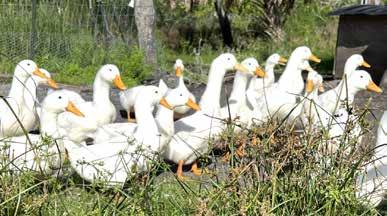
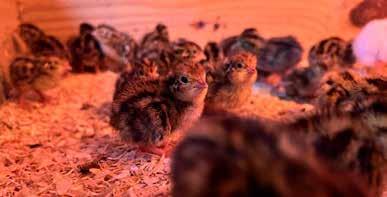
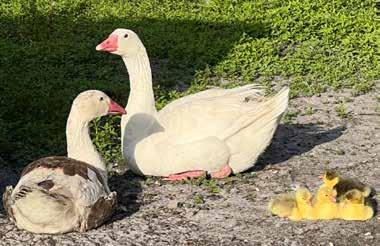

Courtesy of the Florida Department of Agriculture and Consumer Services.

Mar 16, 2017•Recipe
RECIPERecipe Content
Blueberry-Lemon Corn Muffins
Ingredients:
1/2 cup Florida blueberries
3/4 cup all-purpose flour
1 ½ teaspoons baking powder
1/2 cup yellow cornmeal
1/2 cup plus 1 tablespoon sugar
1 tablespoon freshly grated lemon zest
1/2 cup whole milk
2 large egg yolks
1/2 stick (¼ cup) unsalted butter
Paper muffin cup liners

For the shell:
In a bowl, stir together the flour, sugar, and salt. Add butter and blend until mixture resembles coarse meal. Add egg yolk mixture and blend until liquid is incorporated. Form dough into a ball, dust with flour and chill, wrapped in plastic wrap, for 1 hour. Roll out dough to 1/8 inch thickness on a floured surface. Fit dough into a 10-inch tart pan with a removable fluted rim, and chill covered for at least 30 minutes or overnight. After chilling line shell with foil, fill the foil with the rice and bake in the middle of a preheated 350°F oven for 25 minutes. Carefully remove the foil and rice, then bake the shell for 5 to 10 minutes more, or until pale golden. Let cool in the pan on a rack.
Chef Justin Timineri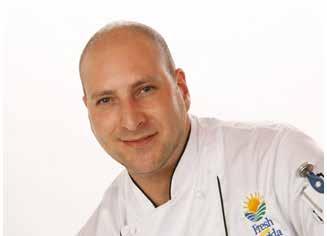
Preheat oven to 375 degrees F and line six 1/3-cup muffin cups with paper liners. Melt butter and cool. Into a large bowl, sift together flour and baking powder and whisk in cornmeal, 1/2 cup sugar, lemon zest and a generous pinch salt. In a bowl, whisk together melted butter, milk and yolks and add to flour mixture with half of blueberries, gently stirring until just combined. Divide batter evenly among cups (batter will fill cups) and press remaining blueberries into tops of muffins. Sprinkle tops of muffins evenly with remaining tablespoon sugar. Bake muffins in middle of oven about 15 minutes, or until tops are golden and a tester comes out clean. Remove muffins from cups and cool on a rack. Keep muffins in an airtight container at room temperature for two days.
For the shell:
q q
1/4 cup Florida natural sugar
1 1/3 cups all-purpose flour
1/4 teaspoon salt
1/2 cup unsalted butter, cold, cut into bits
1 large egg yolk, beaten with 2 tablespoons ice water
Raw rice for weighting the shell
For the filling:
2 cups fresh Florida blueberries, rinsed and dried
1 cup buttermilk
For the filling:
3 large egg yolks
1/2 cup granulated sugar
1 tablespoon freshly grated lemon zest
1 tablespoon fresh lemon juice
1/4 cup unsalted butter, melted and cooled
1 teaspoon vanilla
1/2 teaspoon salt
2 tablespoons all-purpose flour
Confectioners’ sugar, sifted
Accompaniment: Fresh whipped cream or vanilla ice cream
In a blender or food processor blend together buttermilk, egg yolks, granulated sugar, zest, lemon juice, butter, vanilla, salt, and flour until smooth. Spread blueberries evenly over bottom of the shell and pour the buttermilk mixture over them. Bake the tart in the middle of a preheated 350°F oven for 30 to 35 minutes, or until filling is set. Let the tart cool completely in the pan on the rack. Sprinkle with the confectioners’ sugar, and serve at room temperature or chilled with a topping of choice.


METAL ROOFING
Thousands of 8ft. & 10ft. sheets. In Stock. Prices from $6 and up. Custom lengths available. 813-752-7088 ask for Ferris
ALUMINUM
We have all your aluminum needs! Screen Room, carports & awnings. Call Blake (813) 752-3378
WINDOW SCREENS
We make window screens of all sizes available in different frame colors. Call Ted 813-752-3378
CABINETS
All wood kitchen cabinets. All wood vanities. Custom made to your size. Call Chris 813-752-3378
VINYL SIDING
Many colors and styles to choose from. Ask for Ted. 813-752-3378
MOBILE HOME SUPPLIES
Everything you need under ONE roof! Call Blake 813-752-3378
NEW, USED & ABUSED.
CALL FOR A WINDOW QUOTE.
We are a MI Windows dealer. Our windows are energy star, lifetime warranty. Call Broke & Poor 813-752-3378
USED ZERO TURN
Zero turn mowers, several to choose from. Call Alvie 813-759-8722
GRAVELY PRO STANCE
52" cut. $2,500 Call today! Ask for Alvie 813-759-8722
2016 GRAVELY PRO STANCE
52 Stand on mower. $2,500 Call 813-759-8722 Ask For Alvie
MECHANIC NEEDED
Agricultural equipment. Pay with benefits based on experience. Call David 863-537-1345 or Alvie 813-759-8722
PARTS COUNTER HELP
Wanted for parts look up and sales. Experience in the agriculture equipment service. Speak with Alvie. 813-759-8722
I4 POWER EQUIPMENT
Trade-Ins Welcomed, Service Department Available. Exit 22 • S. Frontage Rd. Plant City 813-752-4459
JOHN DEERE
Looking for your new tractor? Come see us at Everglades Farm Equipment. evergladesfarmequipment.com 2805 SR 60 West, Plant City 813-737-1660
NEW “LEFT OVER” MASSEY FERGUSON
2606H 65hp tractor. Loader, 4x4, manual shutter transmission, hydraulic remotes. $38,850. Call Alvie 813-759-8722
2018 MAHINDRA EMAX 22G
Mahindra tractor. Low hours, 4X4, with loader. $10,900. Call Alvie 813-759-8722

NEW 2023 BAD BOY BANDIT
750 UTILITY VEHICLE
4x4, liquid cooled EFI engine, power steering, dump bed, roof, 2-piece windshield, winch, mirrors, 2-year limited warranty. $14,975.00. Financing available WAC. Call 813-759-8722
Ask for Alvie.
2021 BOBCAT UV34XL
Six passenger 4x4 utility vehicle. Very good condition. $12,500 Call and ask for Alvie today! 813-759-8722
TITAN 3515
15” flex wing cutter. Used on a one-year rental. Very good condition. $12,500.00. Call 813-759-8722 Ask for Alvie.
USED CULVERT PIPE FOR SALE
20", 22" & 24" OD. Please call O'Cain Inc. 863-425-4171 for inquiries.
OLD ANTIQUE BLUE STOVE
Bread warmer, chrome trim. You have got to see it to believe it! Call Ted for more details. 813-752-3378
DOORS & WINDOWS SPECIAL ORDER
No upcharge. House & Mobile Home. Many standard sizes in stock. Ask for Blake. (813) 752-3378
KITCHEN CABINETS & VANITIES
Get quality all wood cabinets for less than the BIG Box STORES! Call Today! Ask for Blake. (813) 752-3378
OVERSTOCK SPECIAL
Barn doors starting at $80.00 Call Ted 813-752-3378
CULVERT & DRAIN STEEL PIPE NOW AVAILABLE & PRICED TO MOVE FAST!
• 9ft. and 10ft. Diameter used railroad tank car culverts 40 to 50 ft. lengths.
• 20in and 24in Diameter used steel pipe - 45 to 50ft lengths.
ContactGATEWAY PIPE INC. Naples, Florida. Ask for Gary 636-346-3320 Delivered prices available.
FREE Wooden Shipping Pallets
All sizes! Call Alvie 813-759-8722
24 HOUR SERVICE
Coggins Plumbing licensed • bonded • Insured. www.cogginsplumbing.com 813-643-7173
FARM BUREAU INSURANCE
We have you covered! Call us today. 813-752-5577
ALAN’S AIR CONDITIONING
Residential, Commercial Sales SVS & Repair. Legendary service for over 20 years! 813-752-0821
SHOWER STALLS - FIBERGLASS
Scratch and dent shower stalls - fiberglass perfect for hunting camps. $150 you pick! Call us! 813-752-3378

•
•
•
•
•
•
